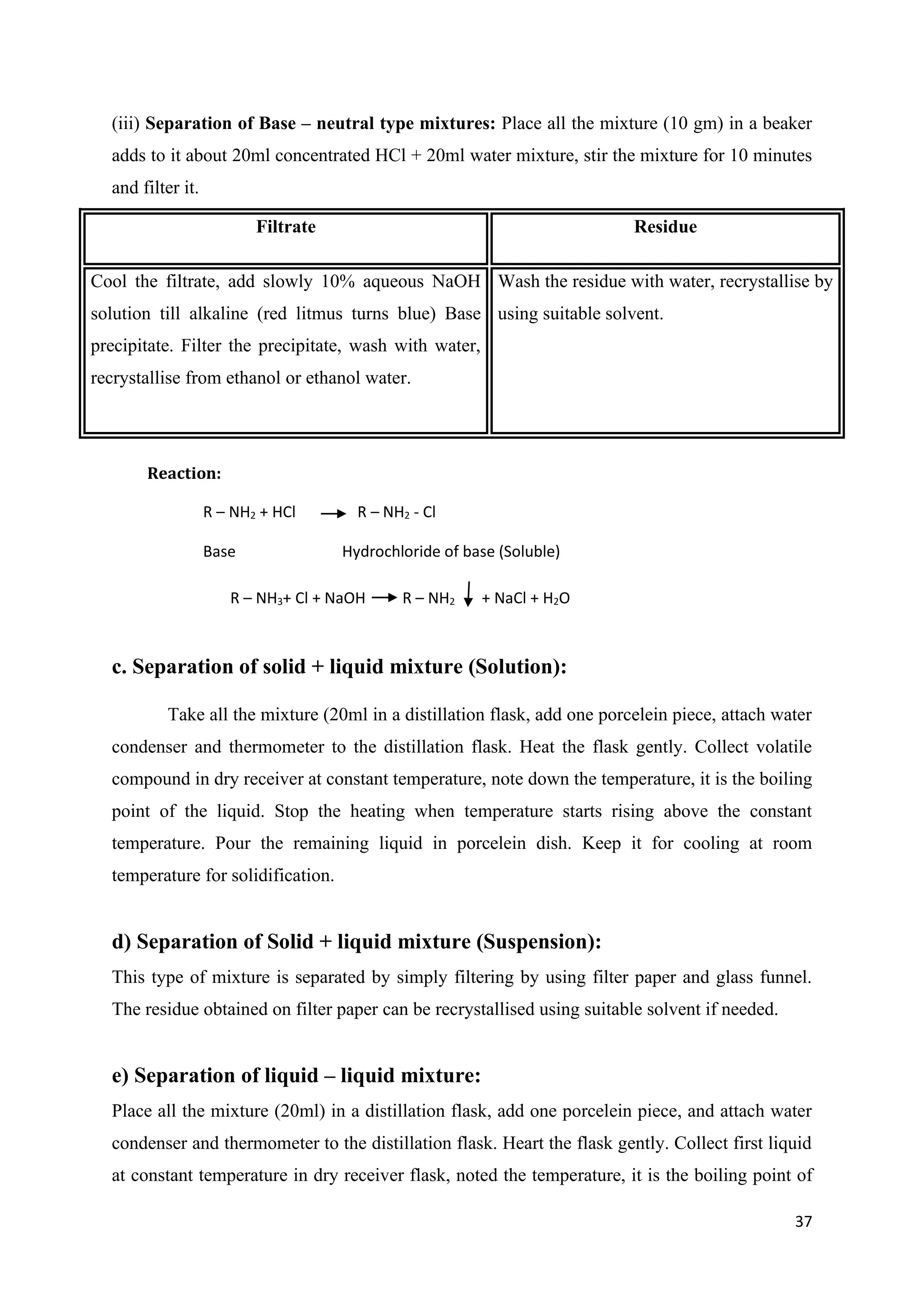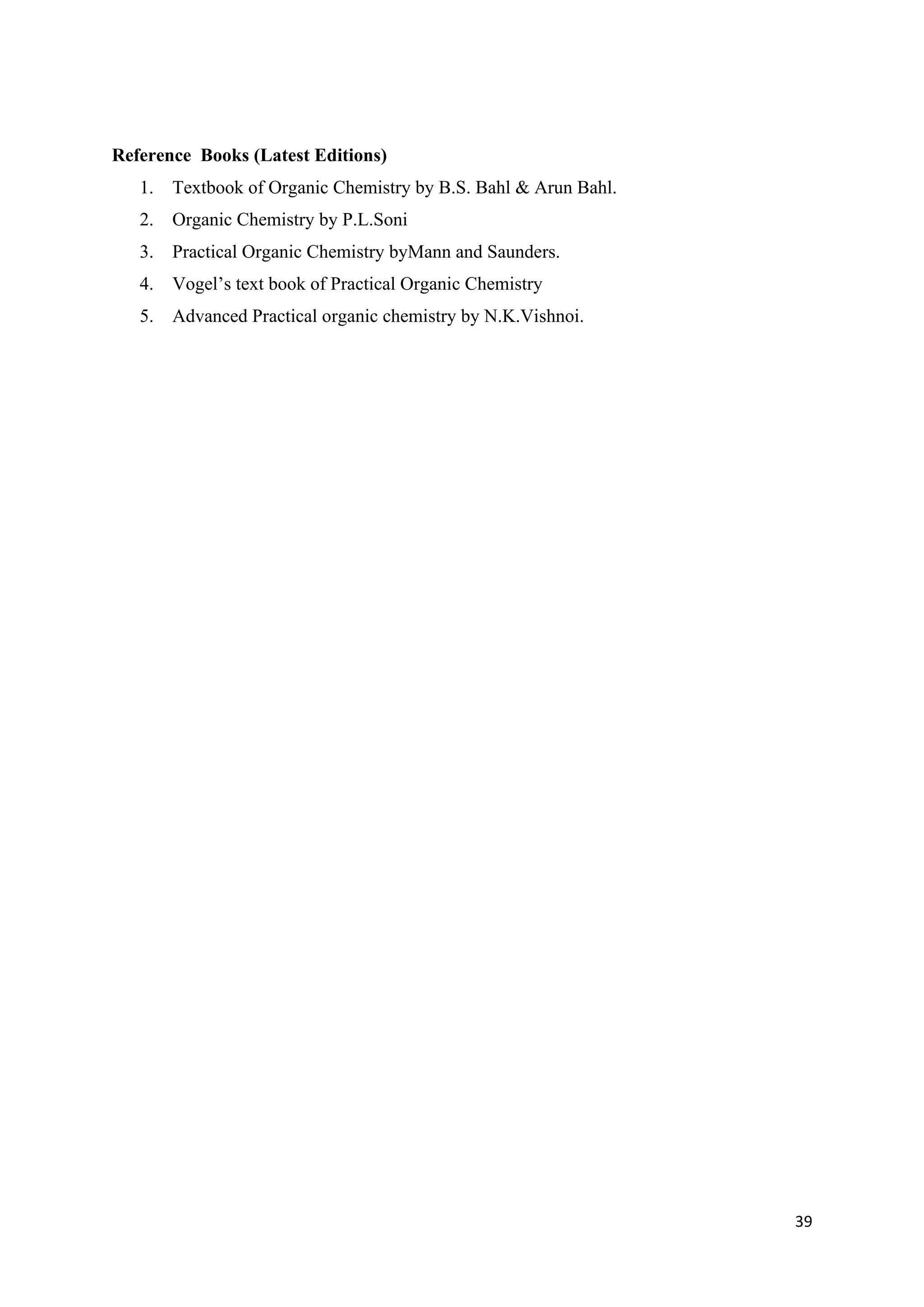The document outlines various synthesis processes and quantitative determination methods for organic compounds, focusing on compounds derived from acetanilide, such as p-bromoaniline and p-nitroaniline, as well as benzilic acid and benzyl benzoate. Each section includes an aim, principle, chemical reactions, required chemicals, and detailed procedures with expected yields. Additionally, it covers separation techniques for binary mixtures and provides information on specific synthesis methods like Fischer’s indole synthesis.
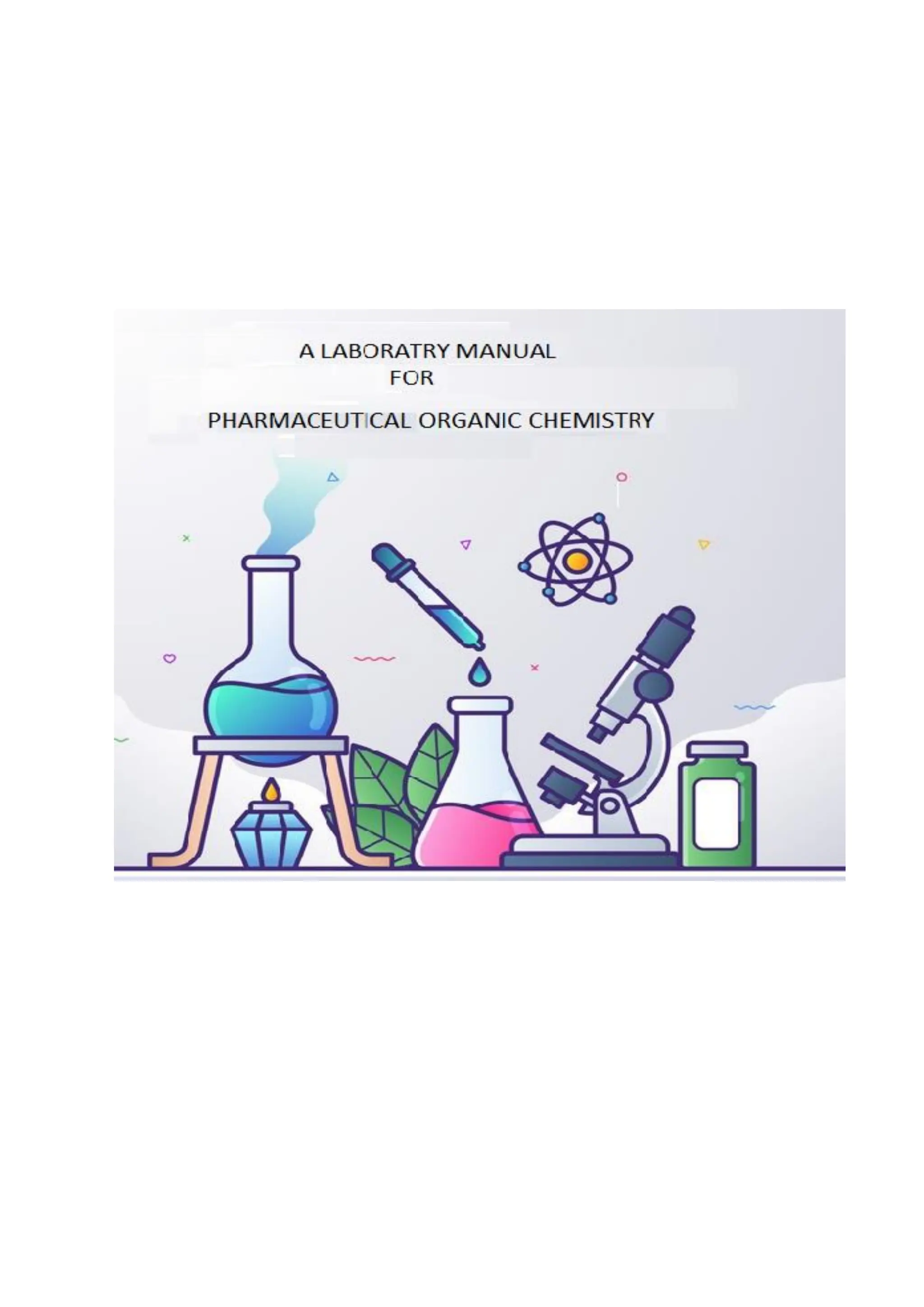
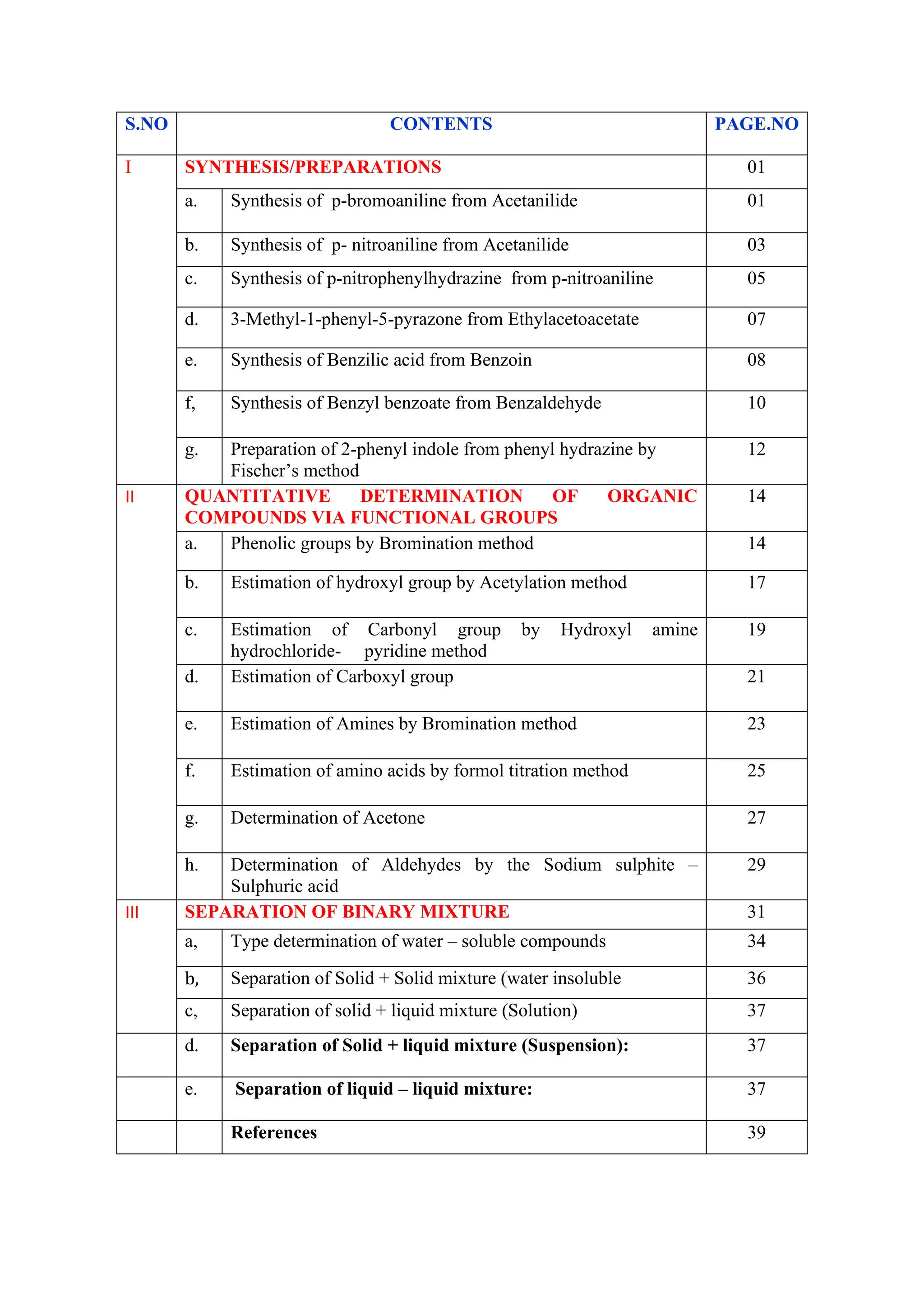
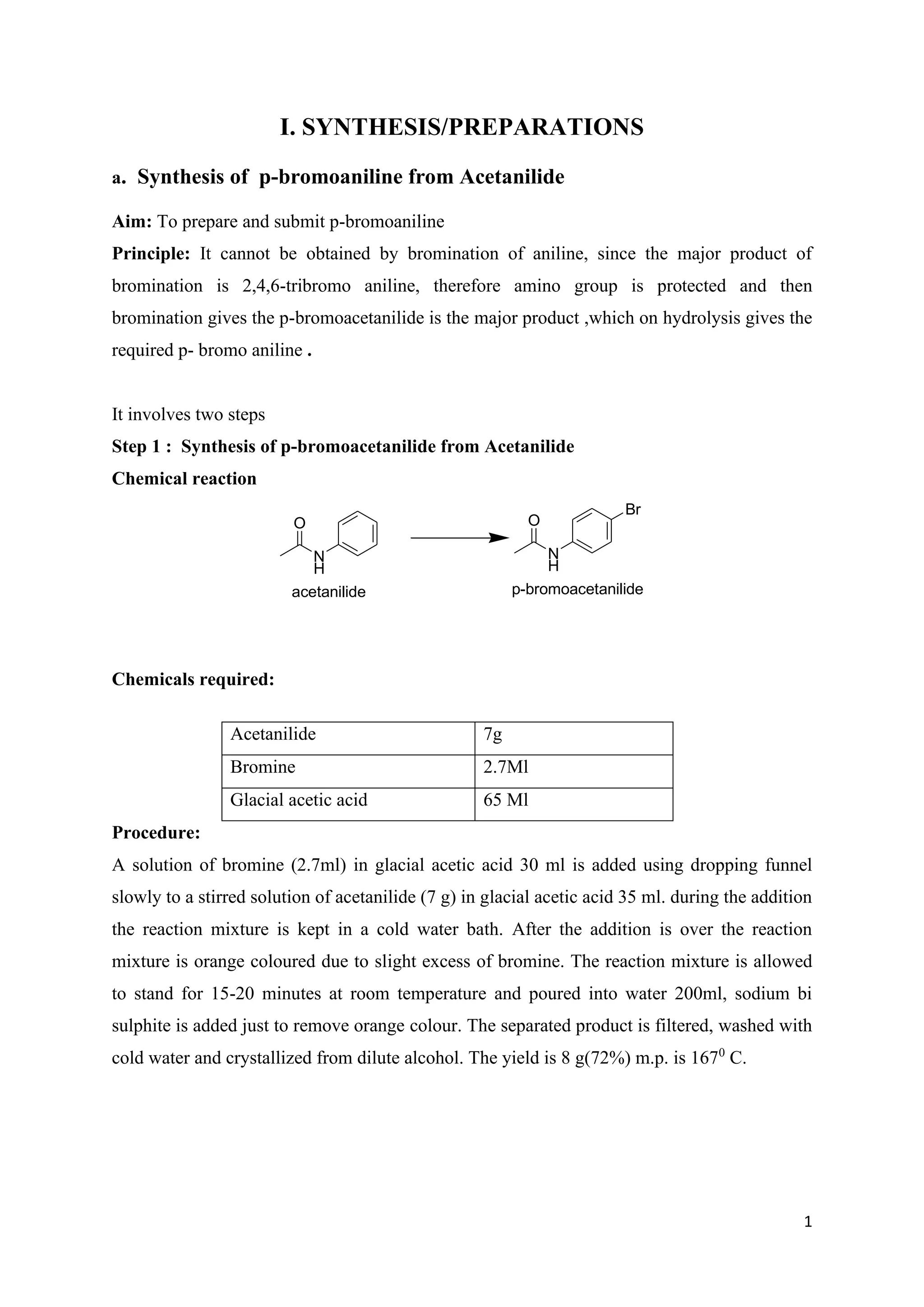


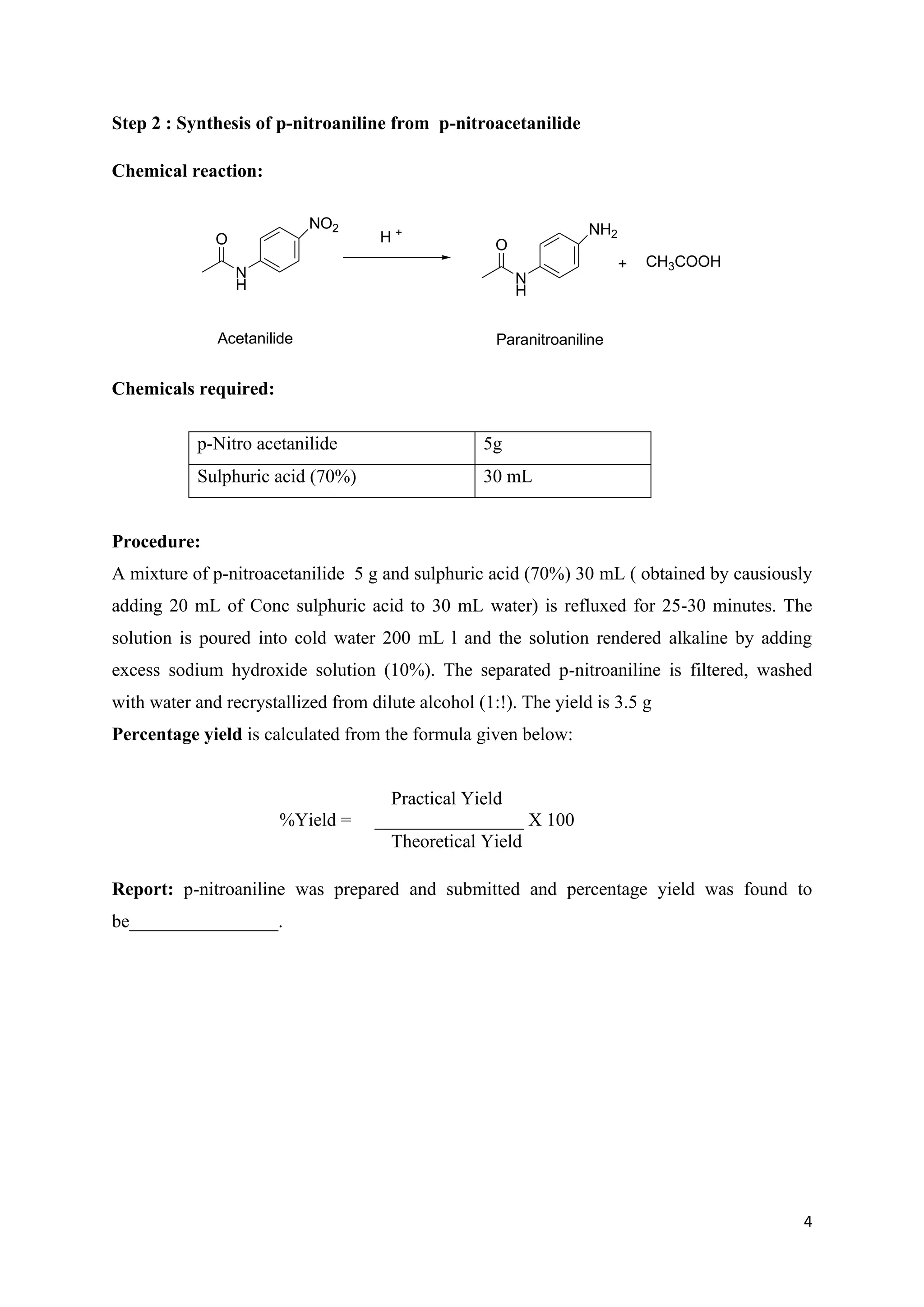

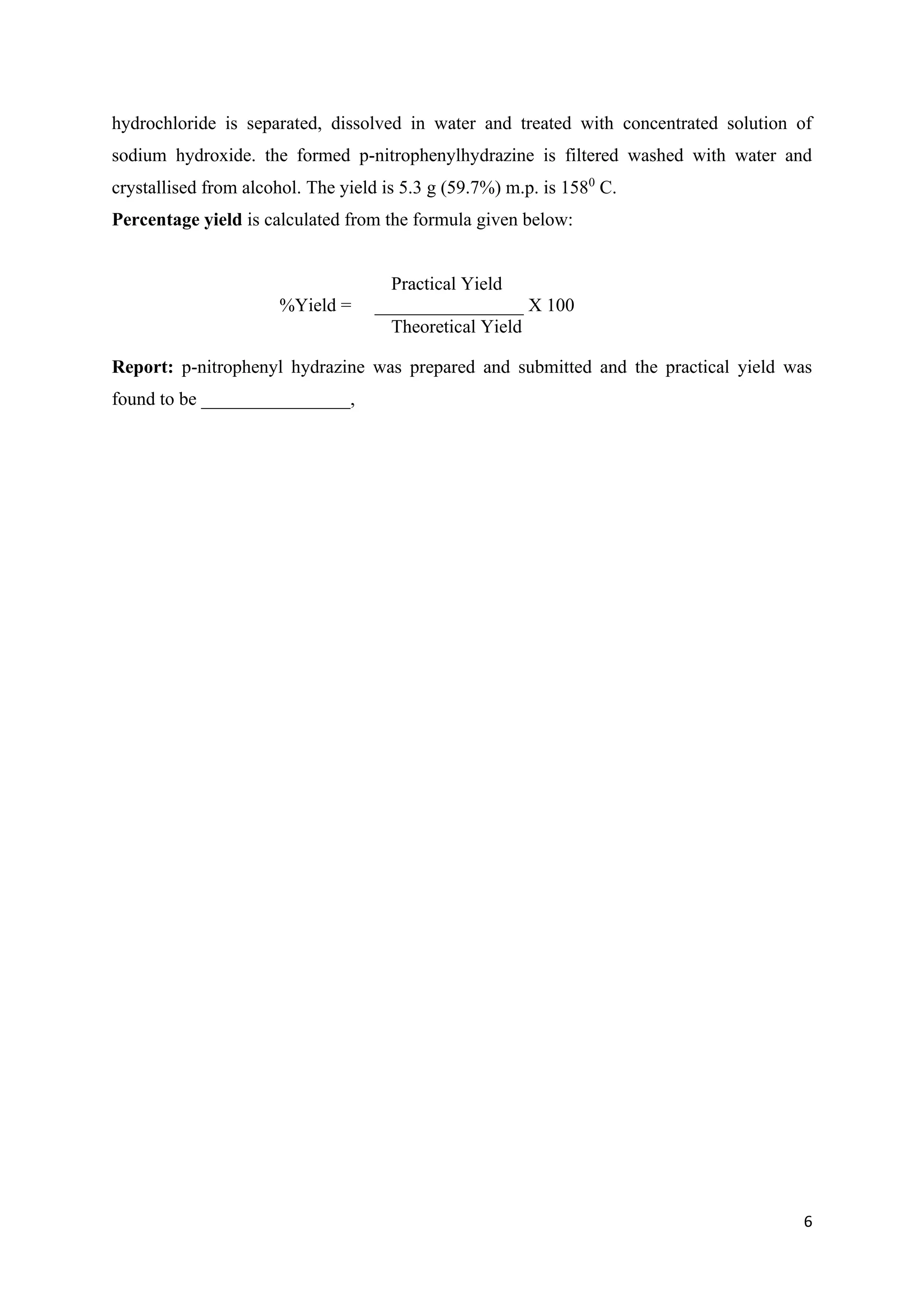

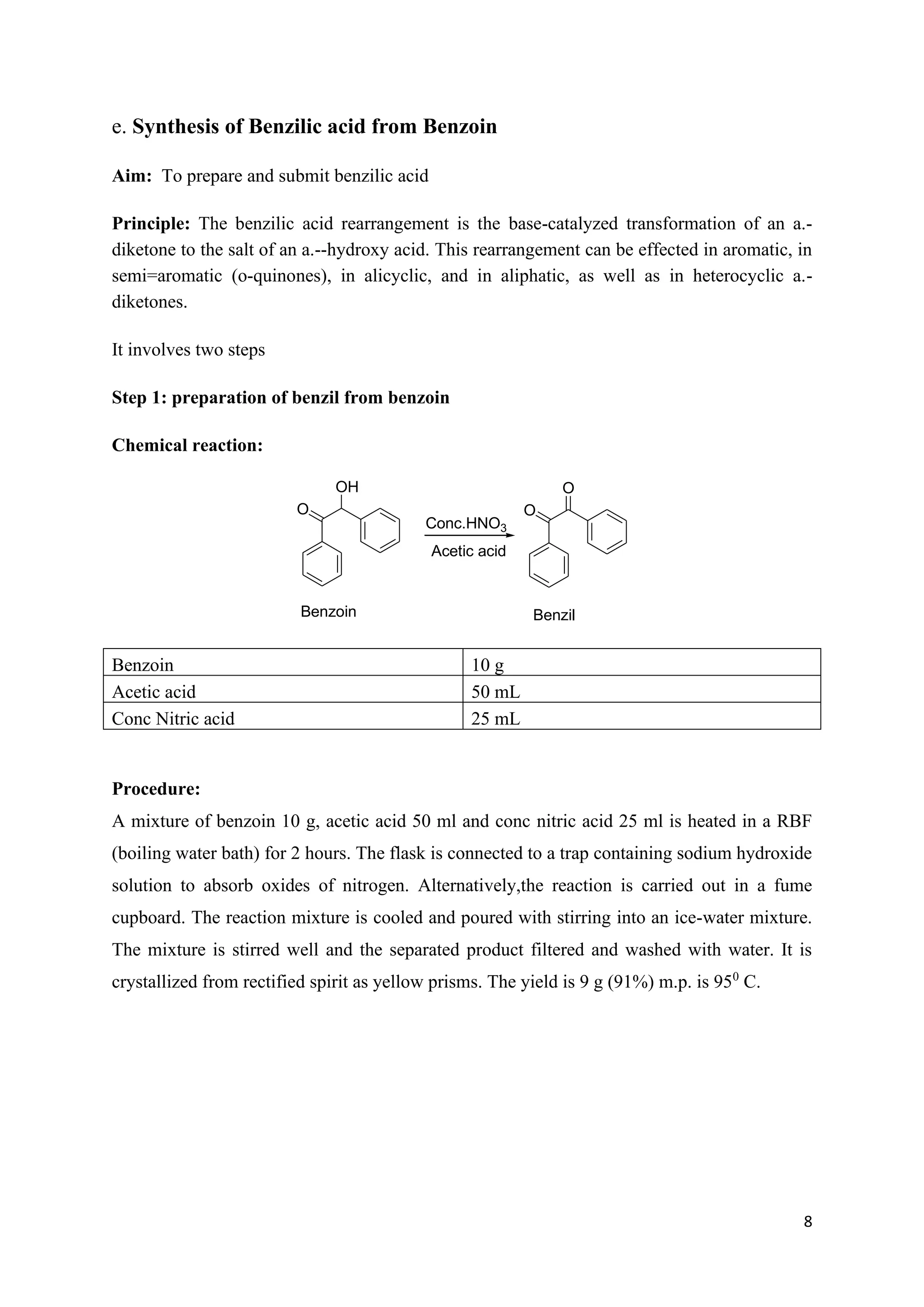
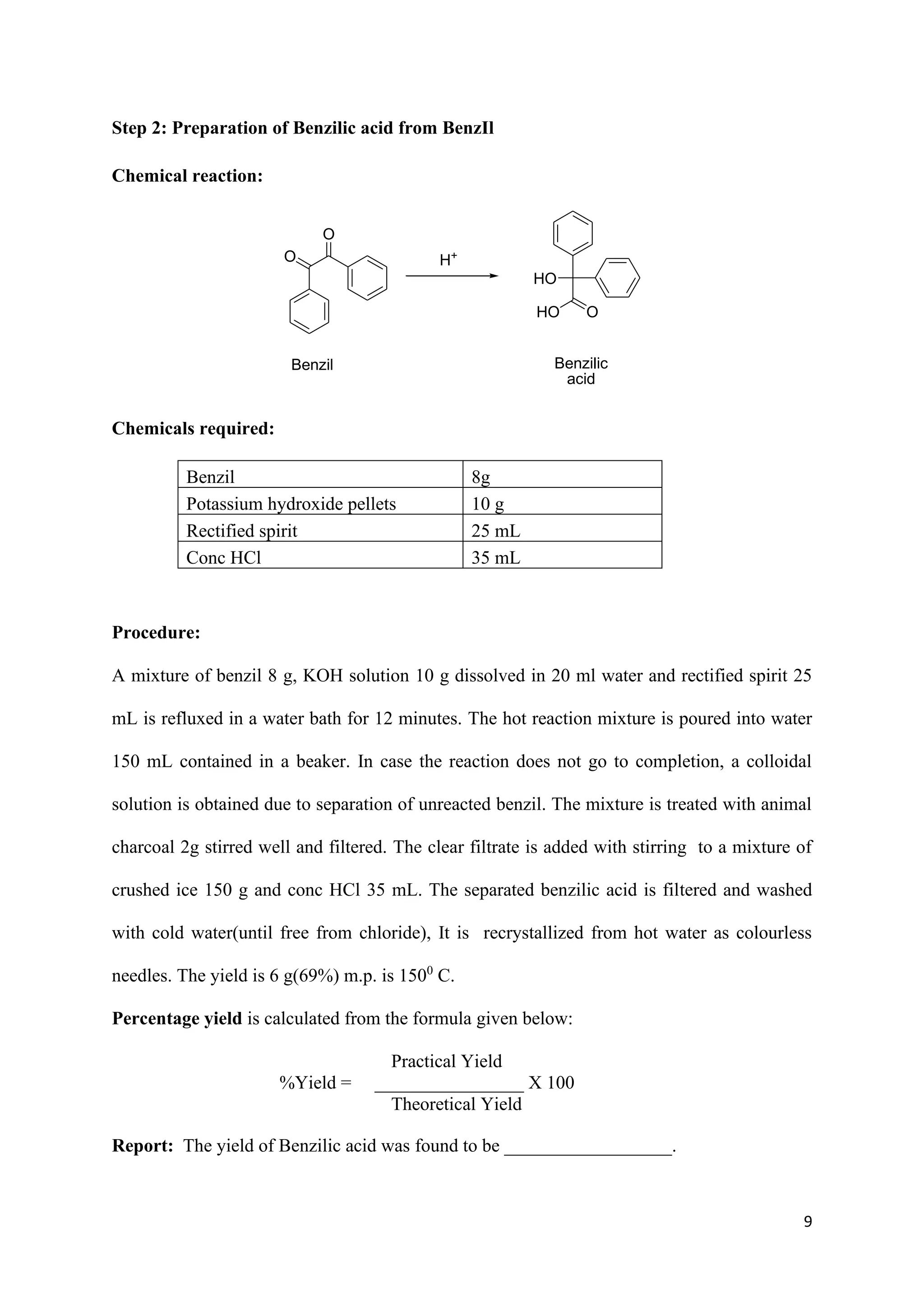

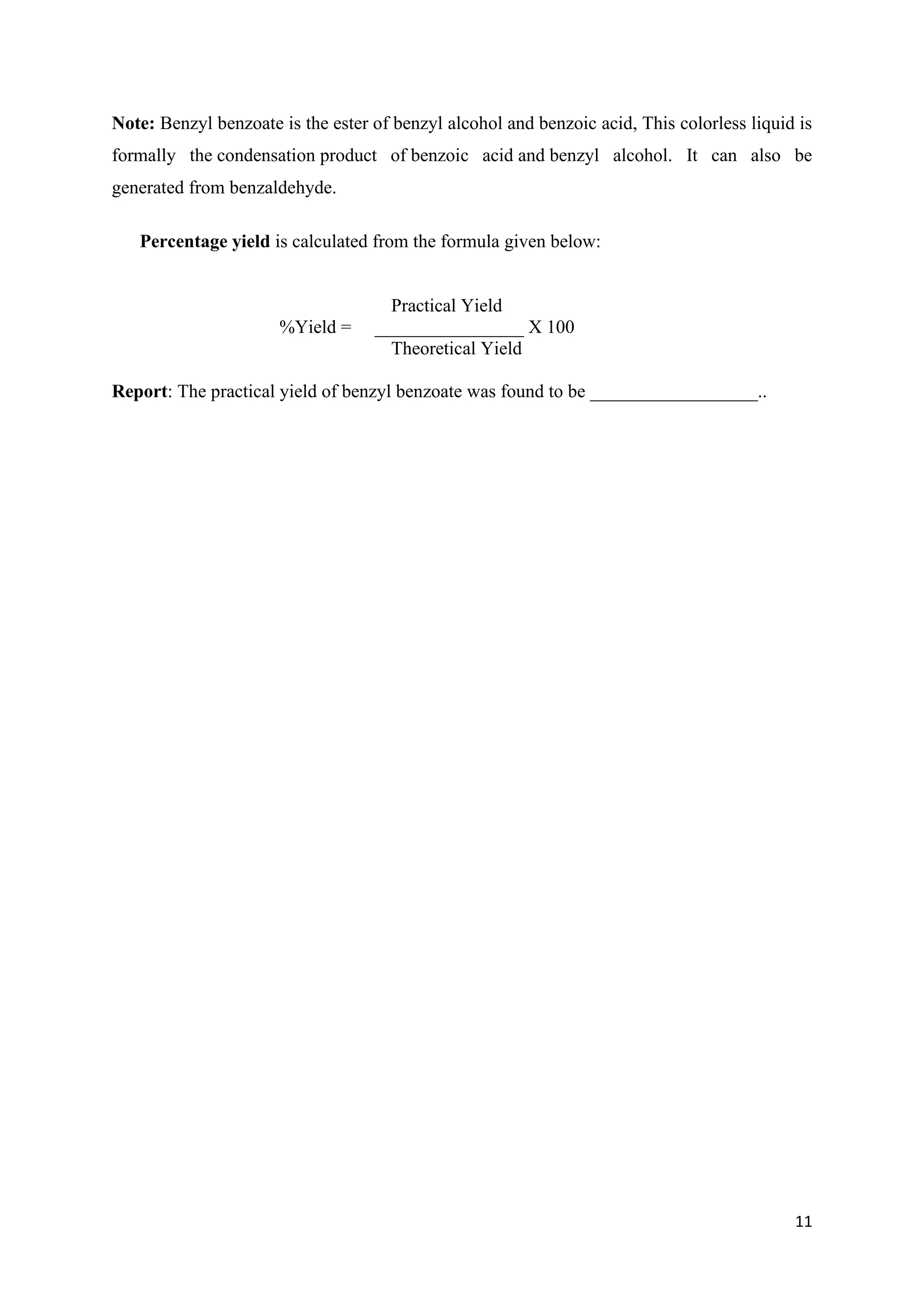
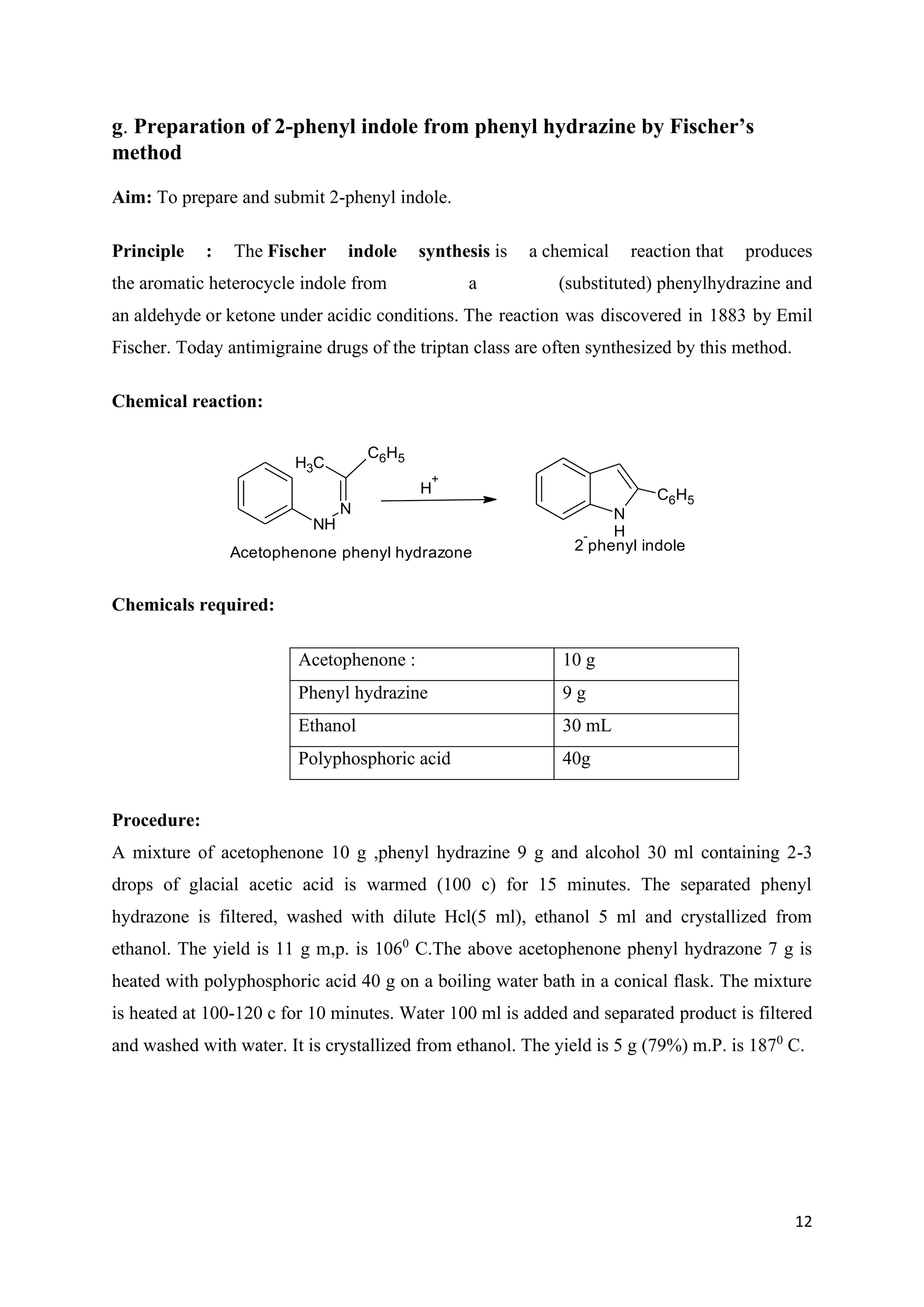
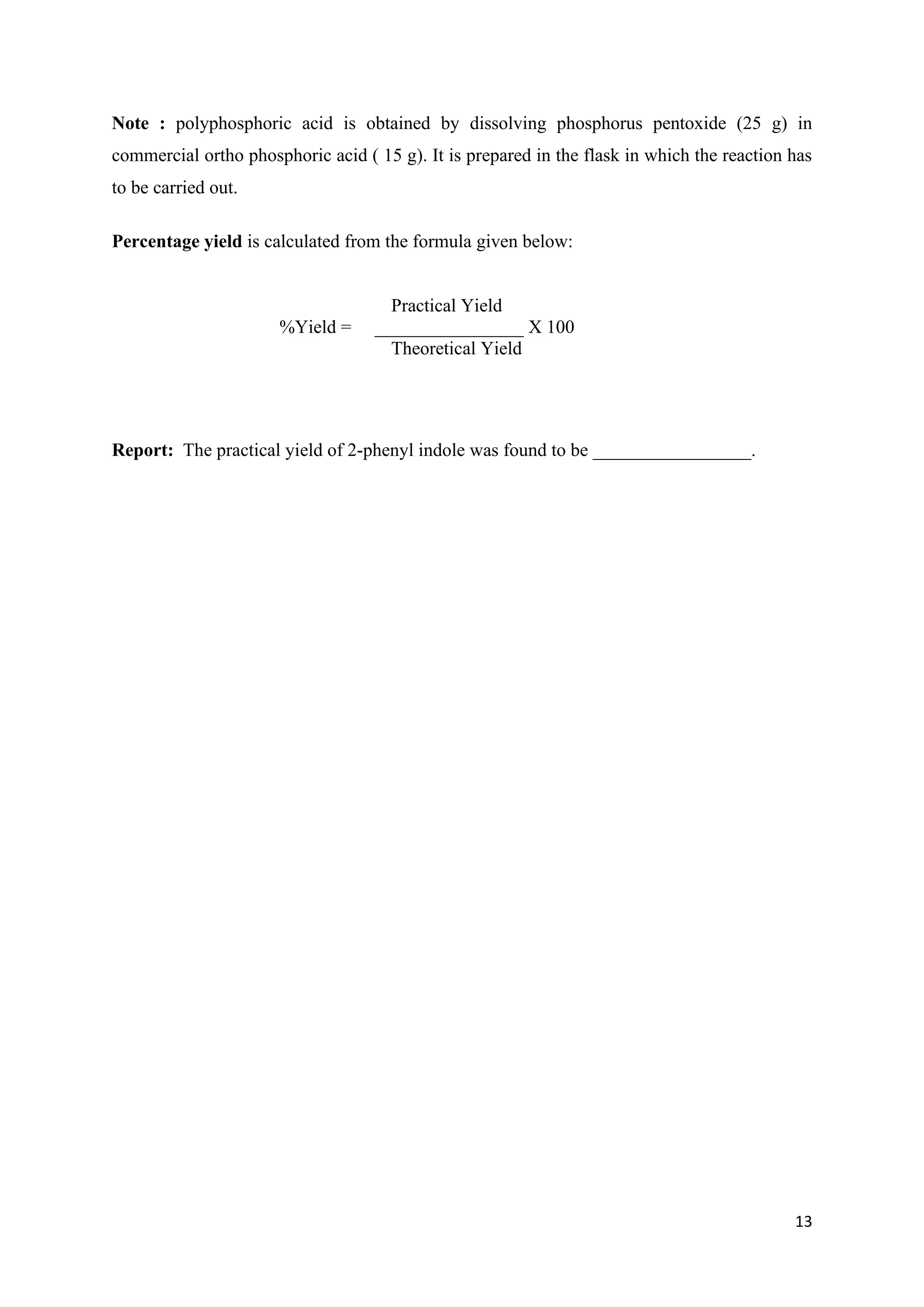
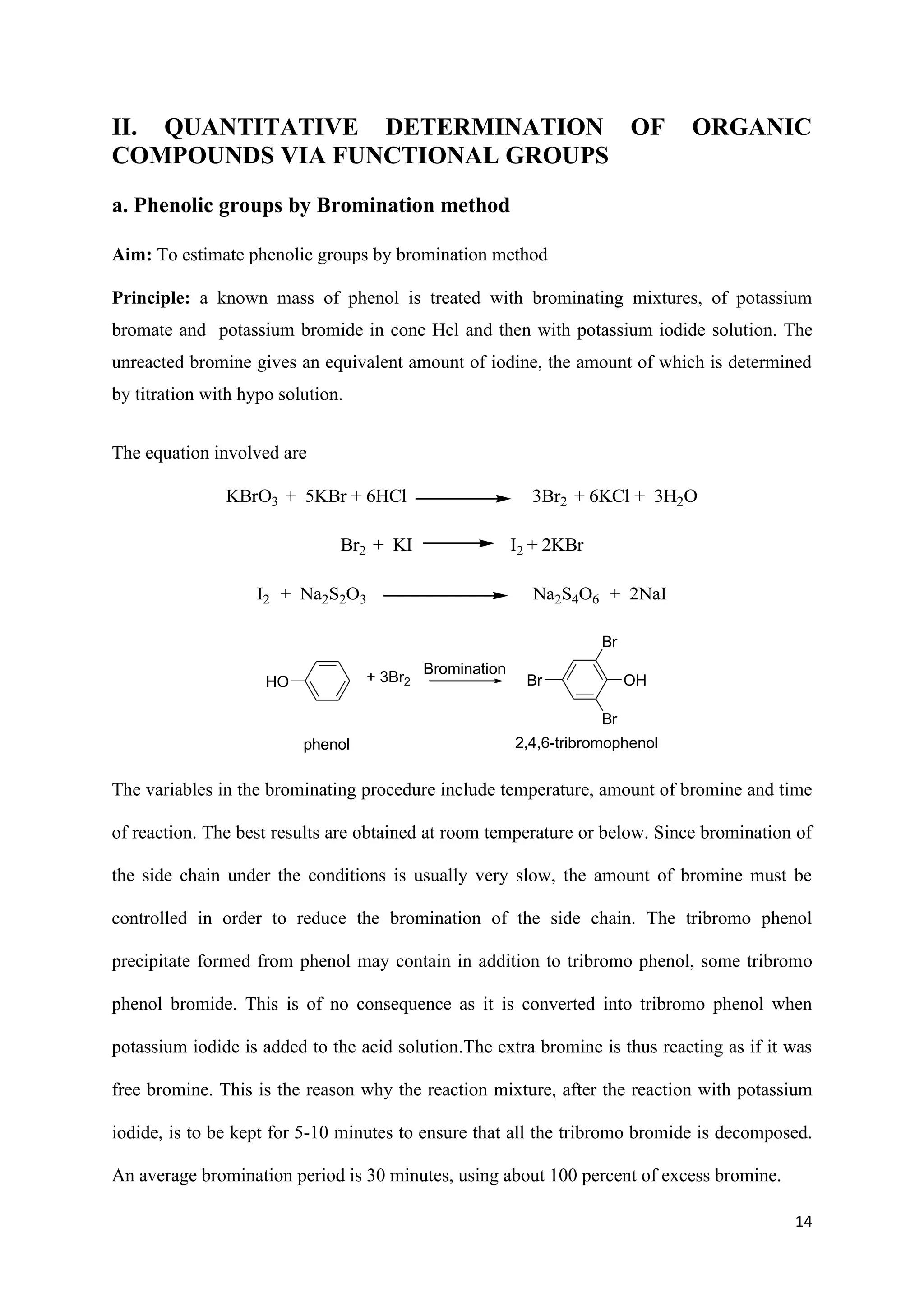
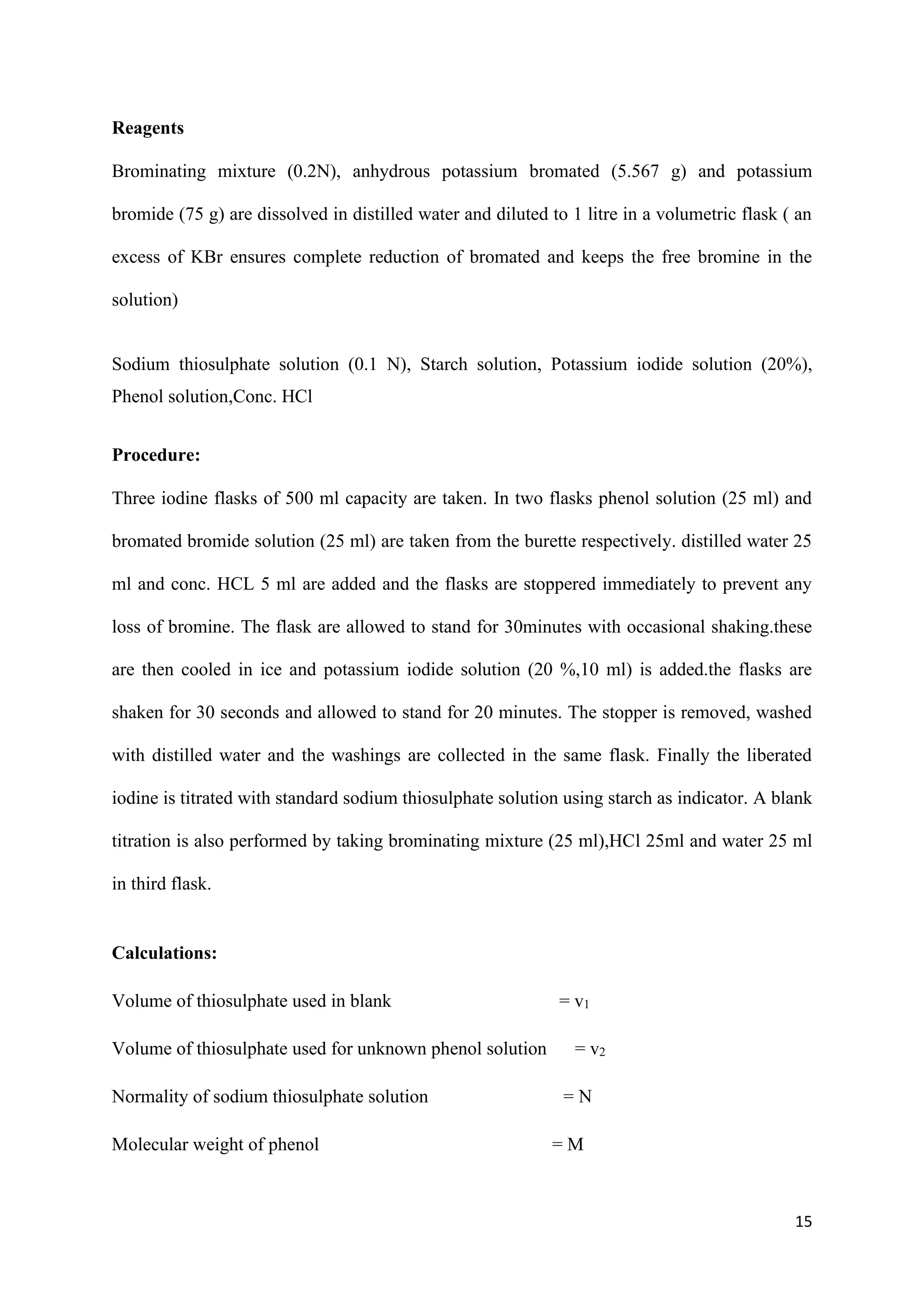
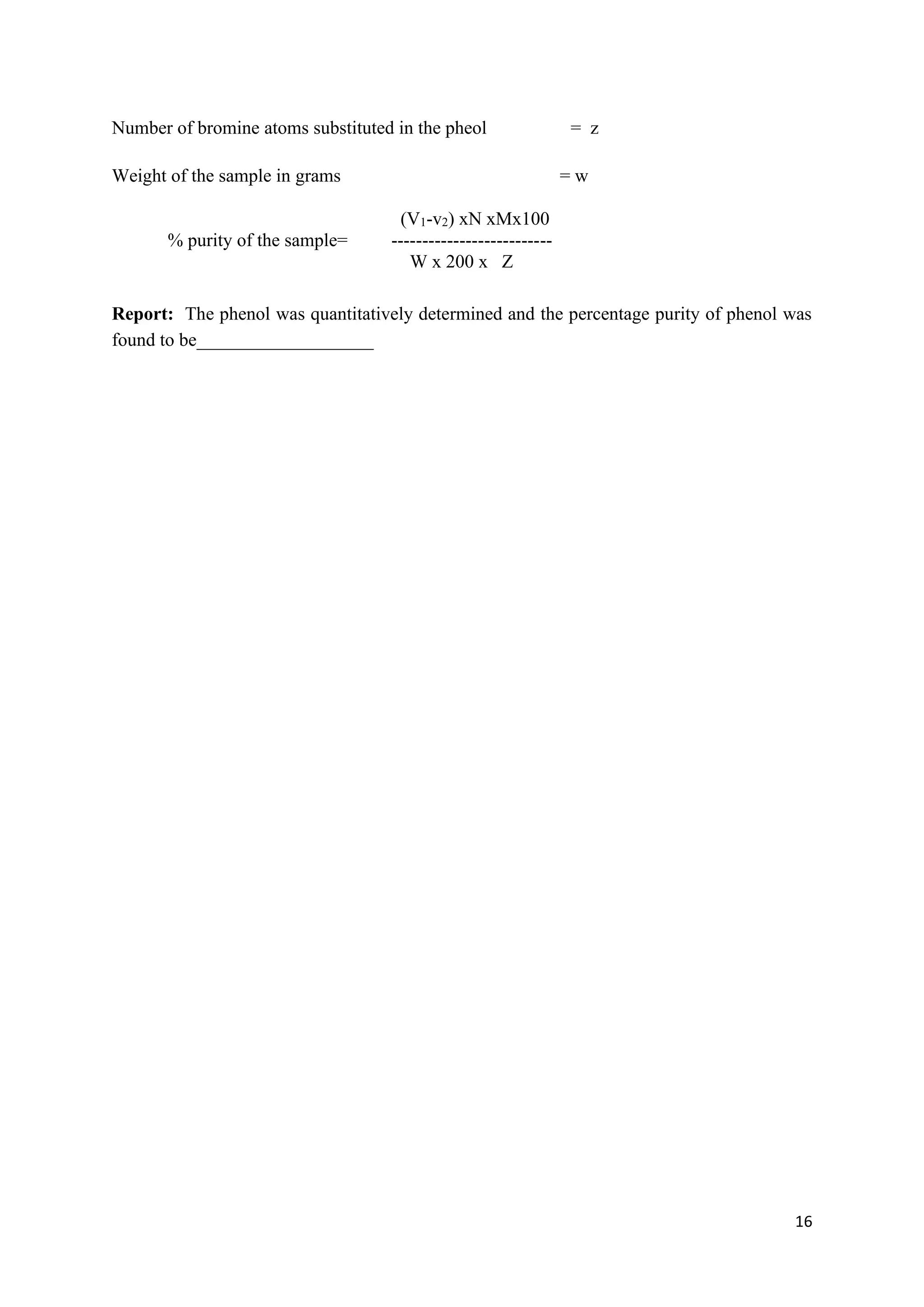

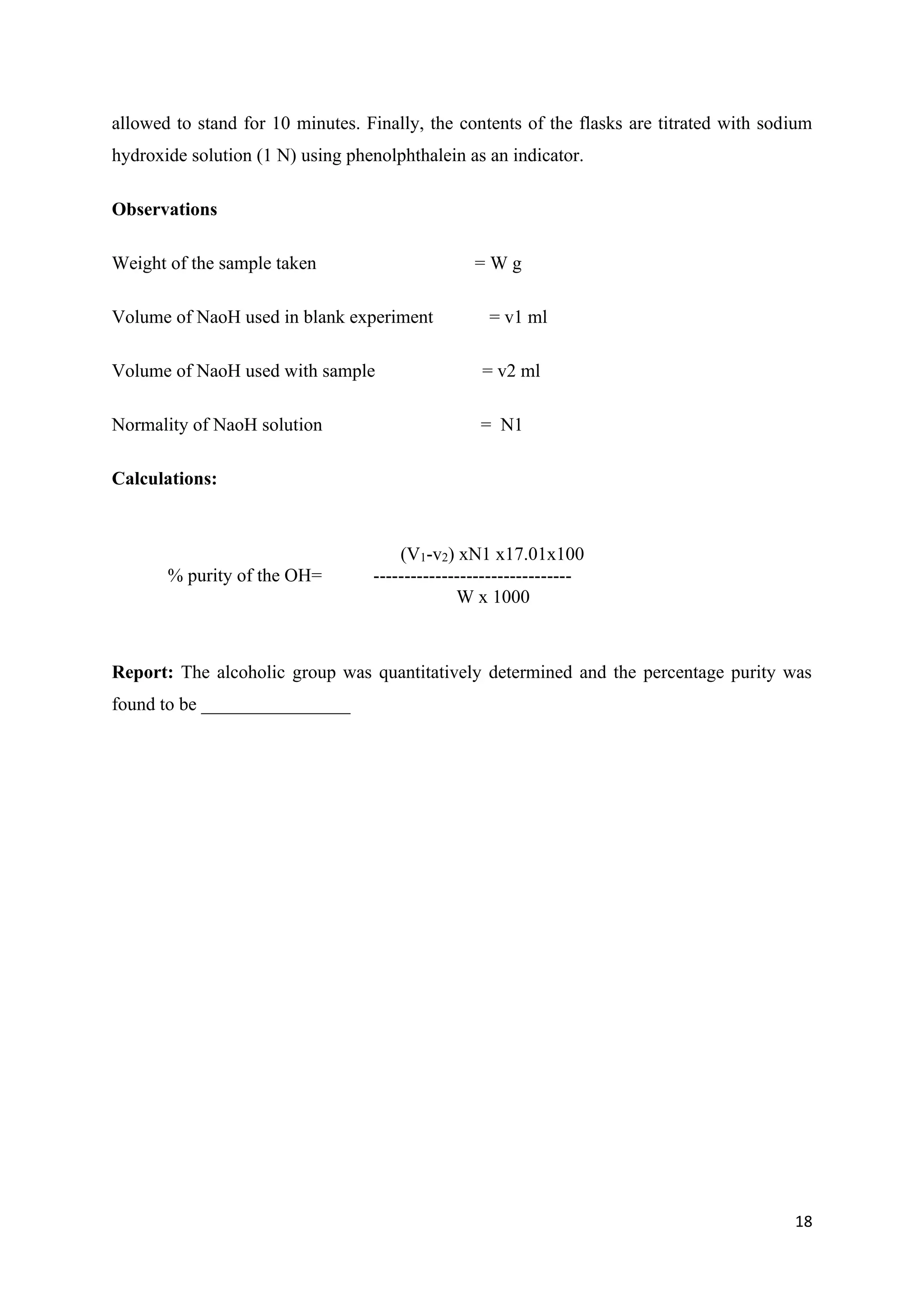
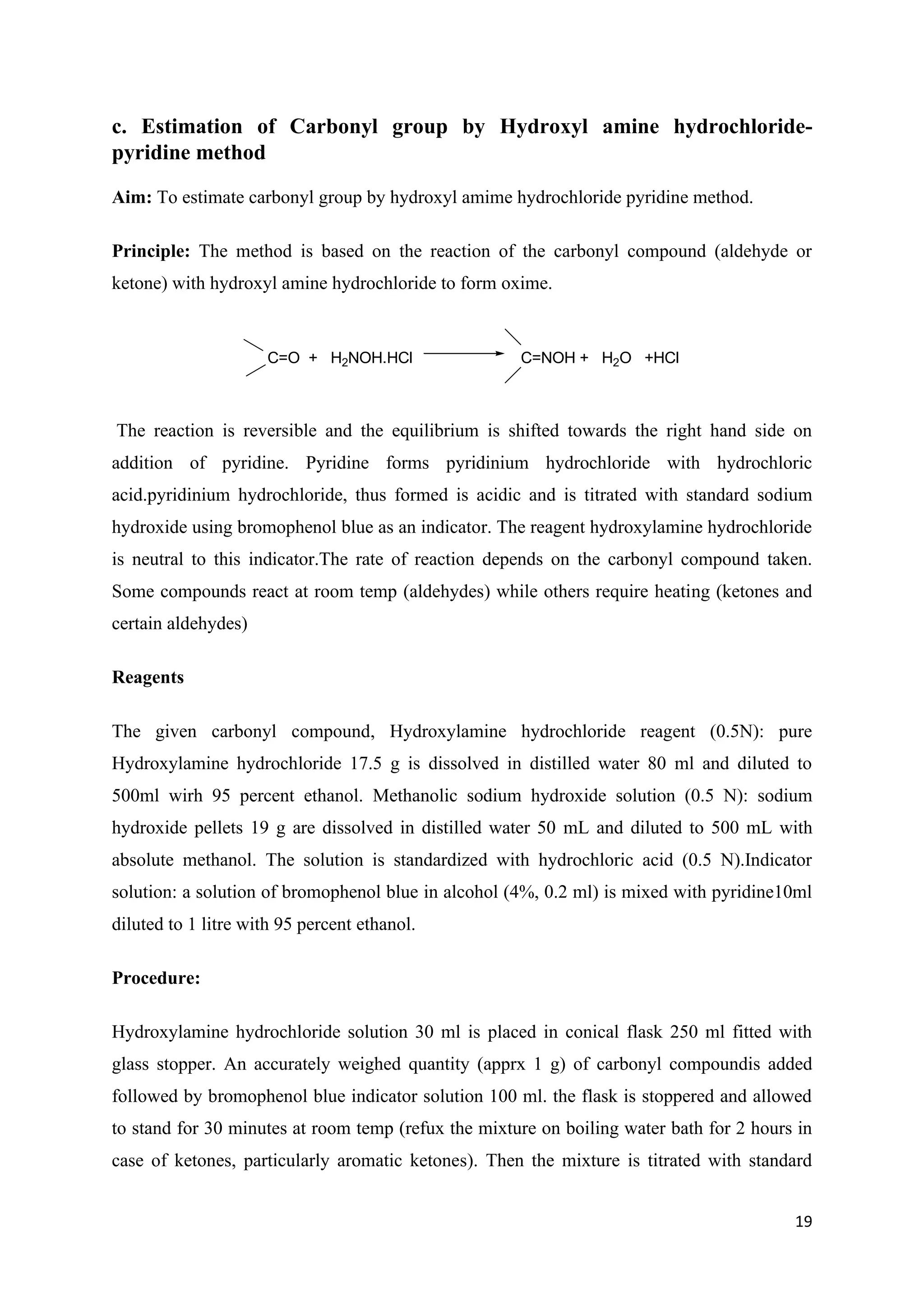
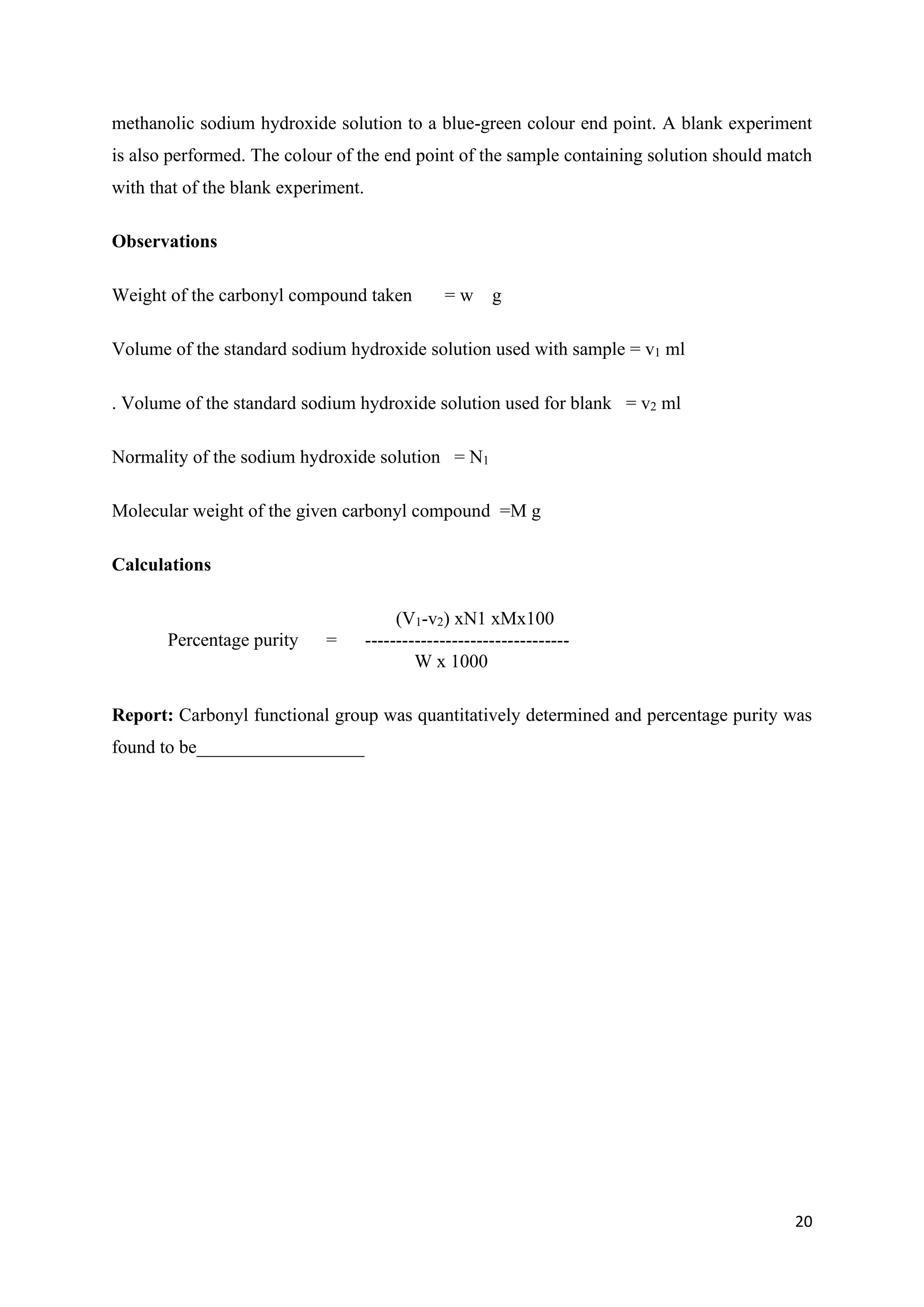
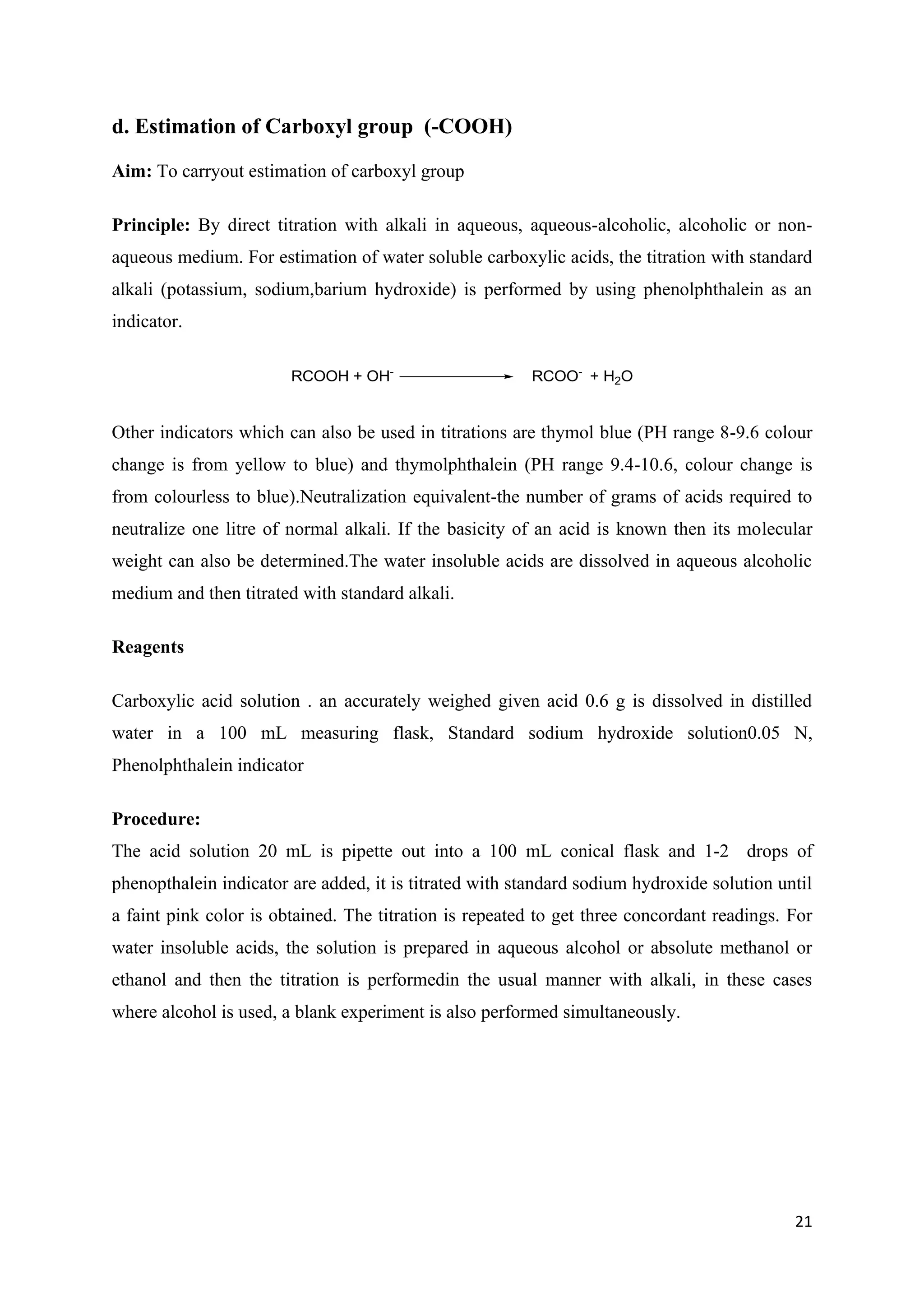
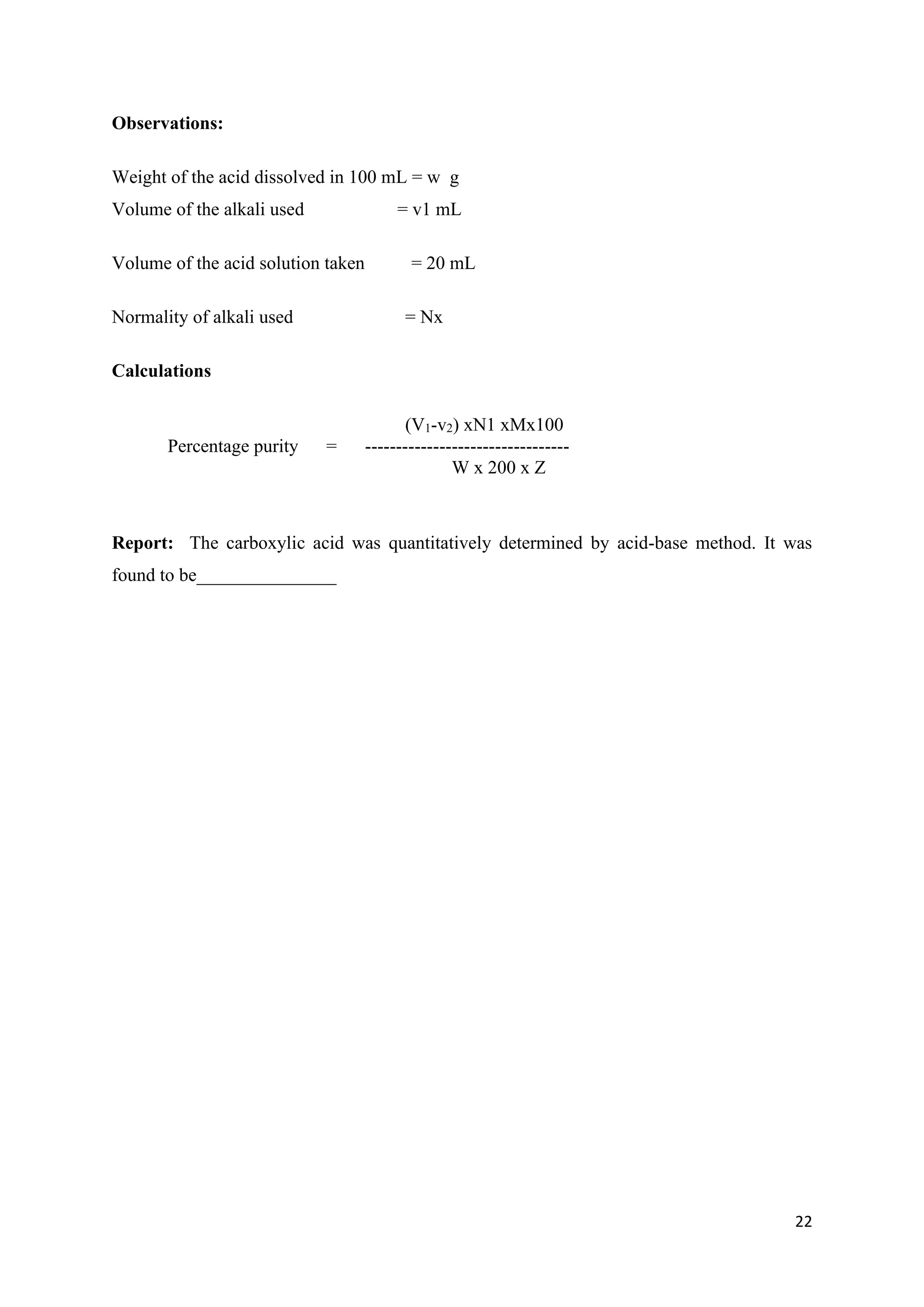
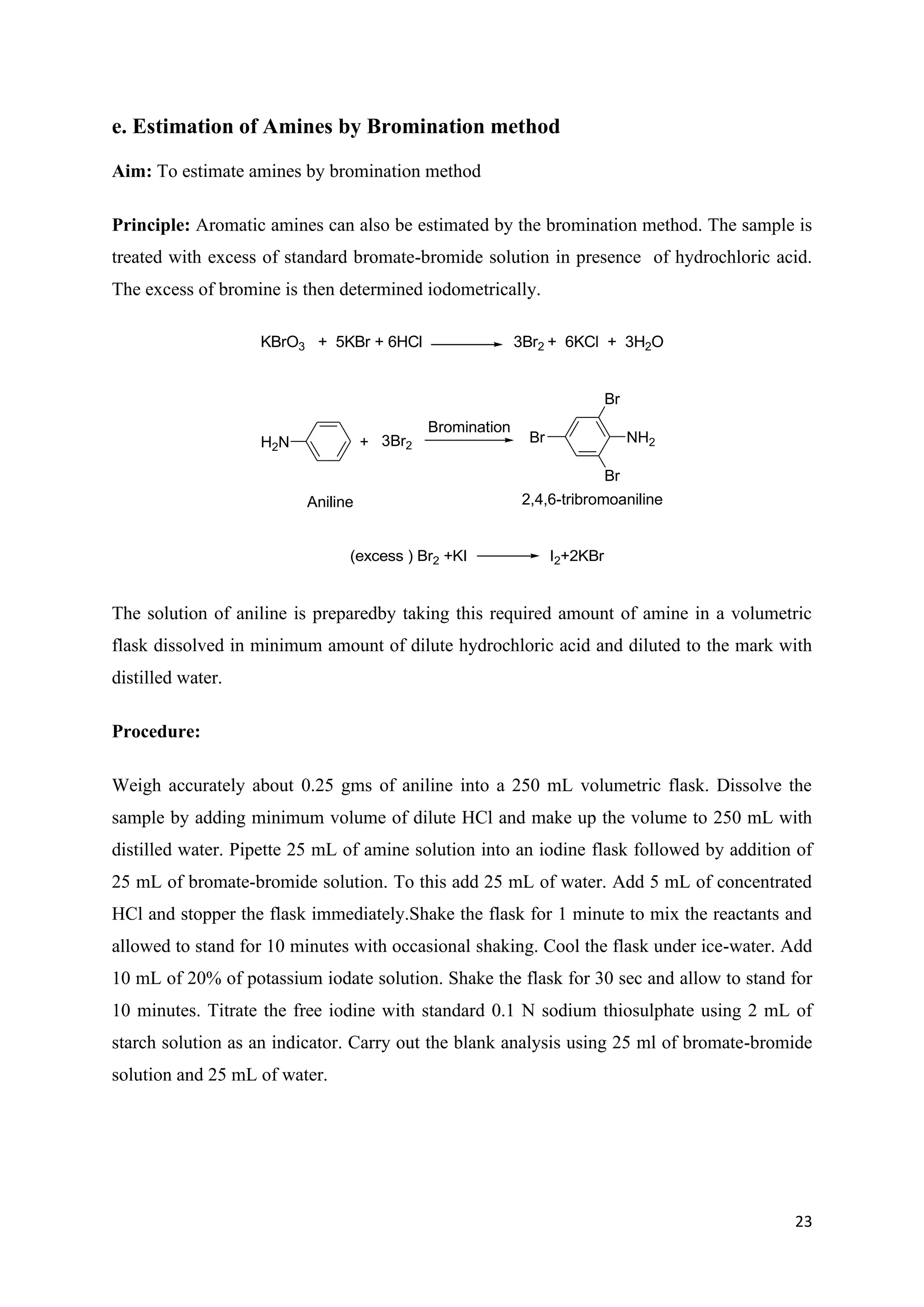

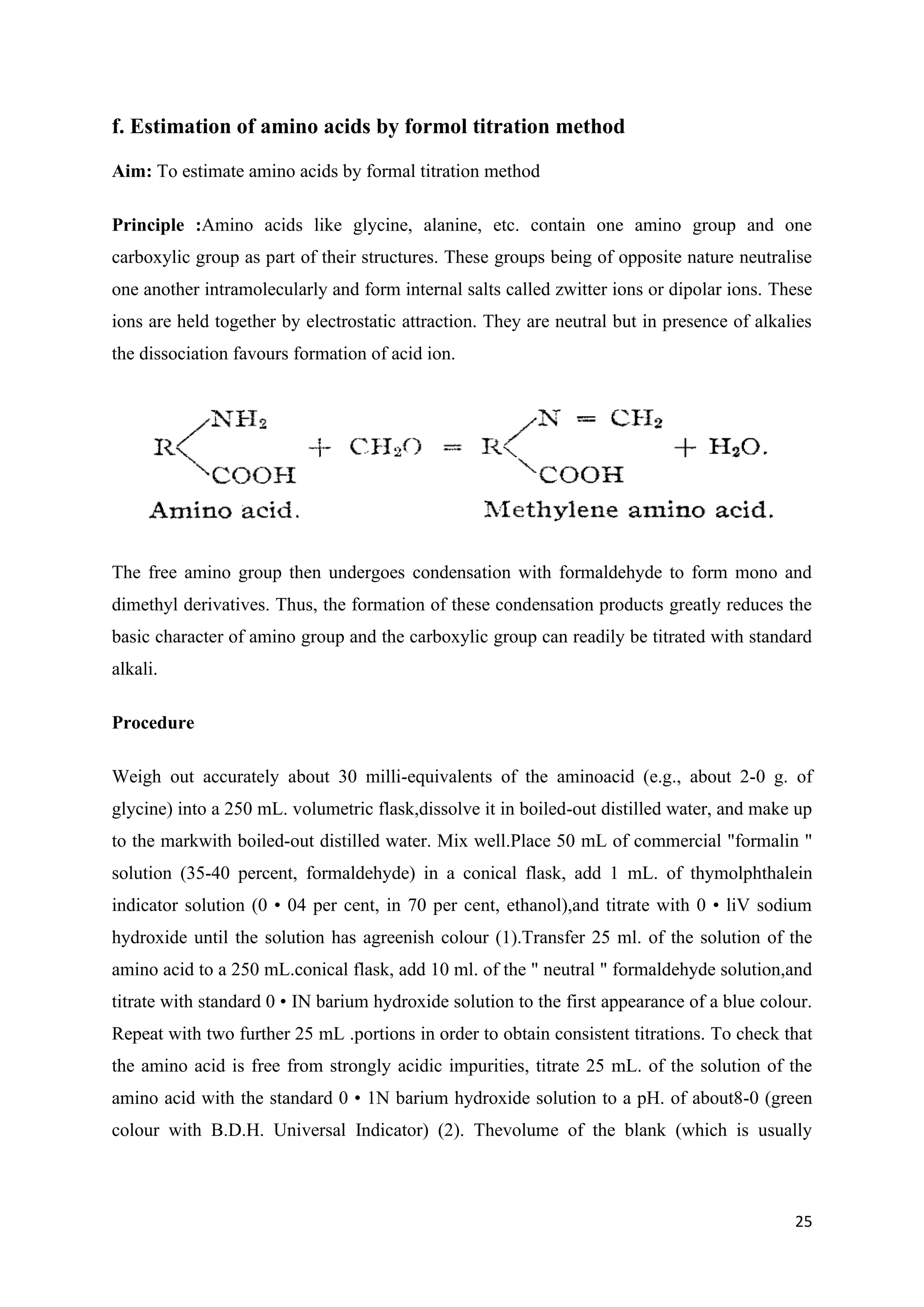
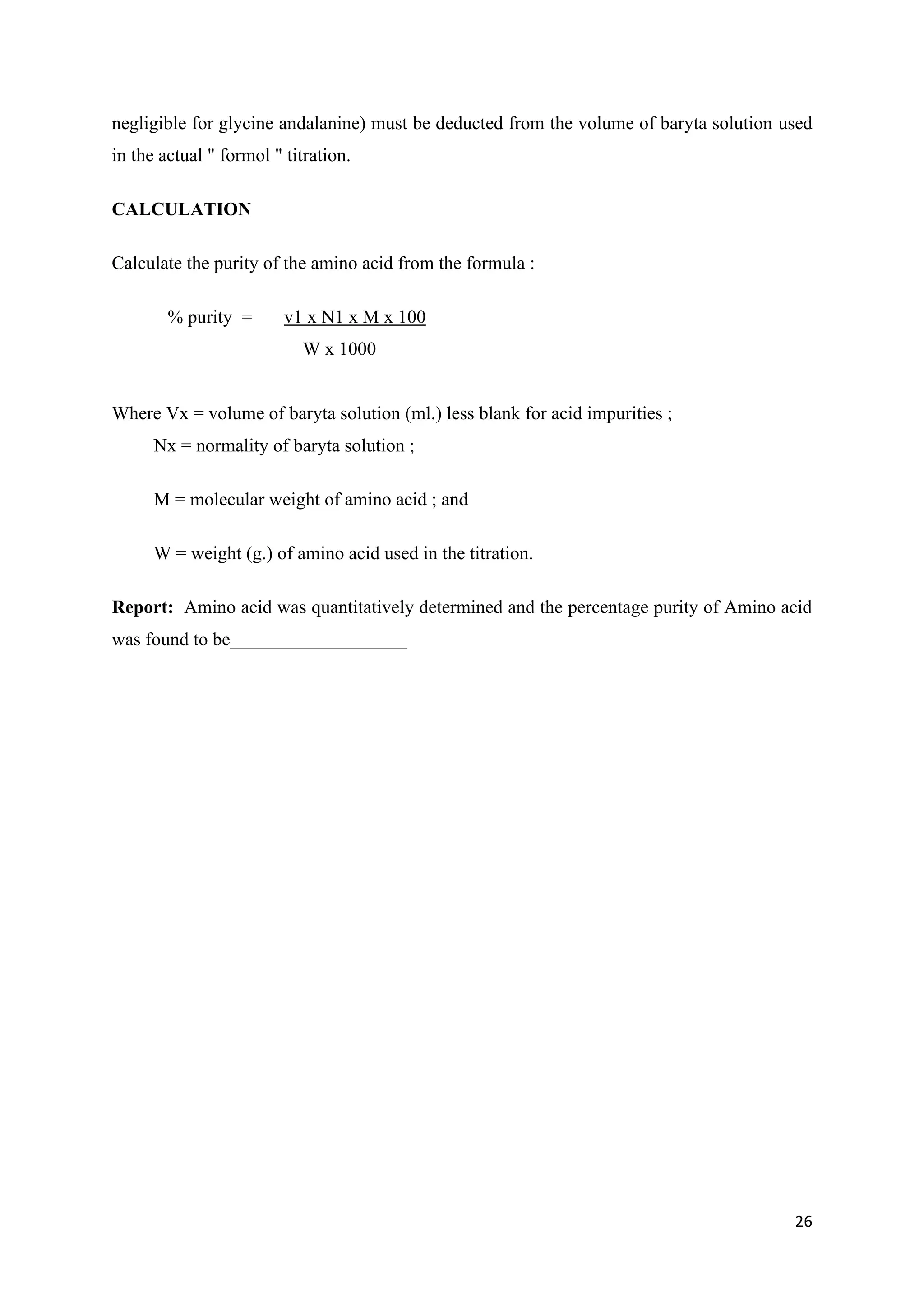

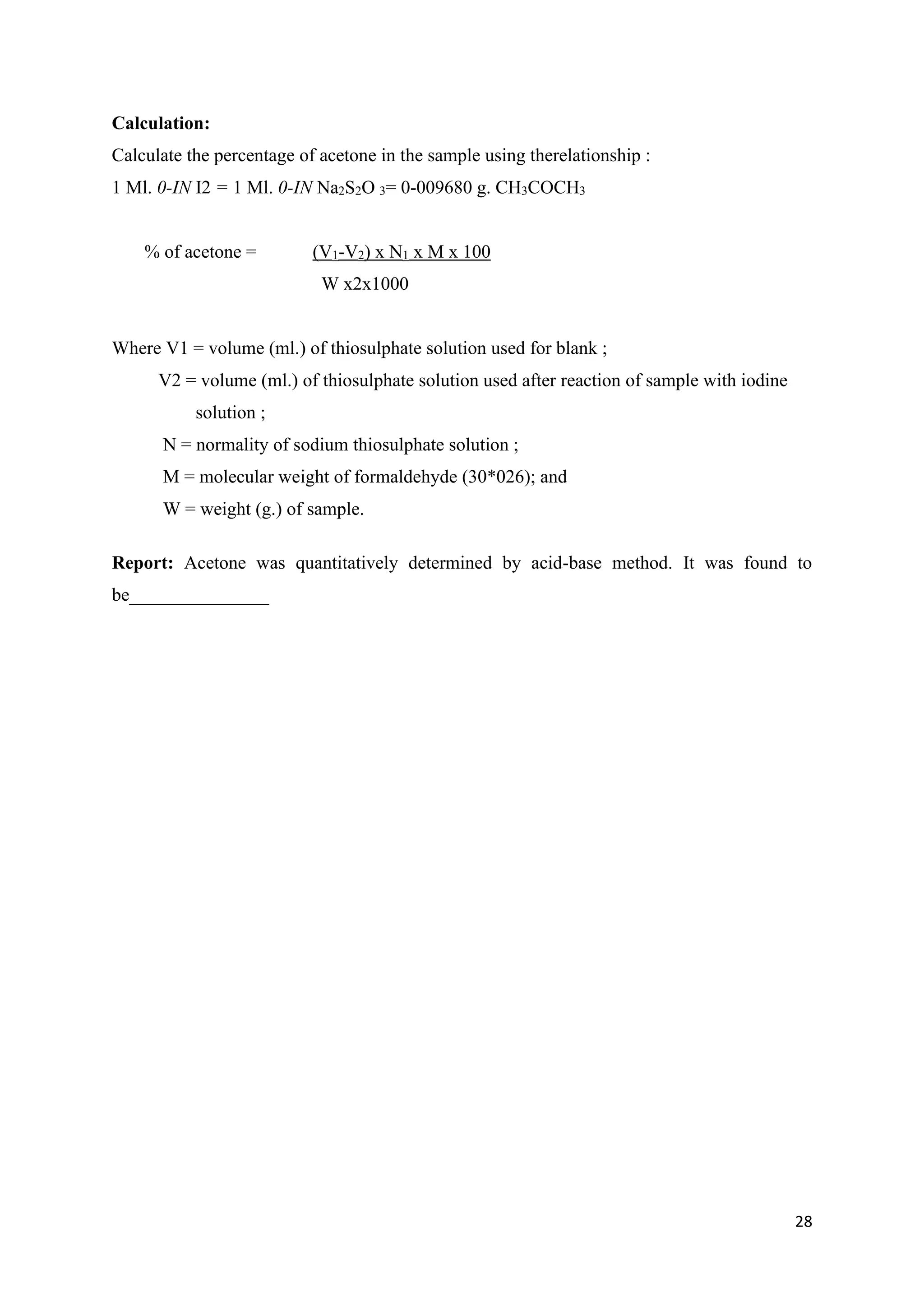
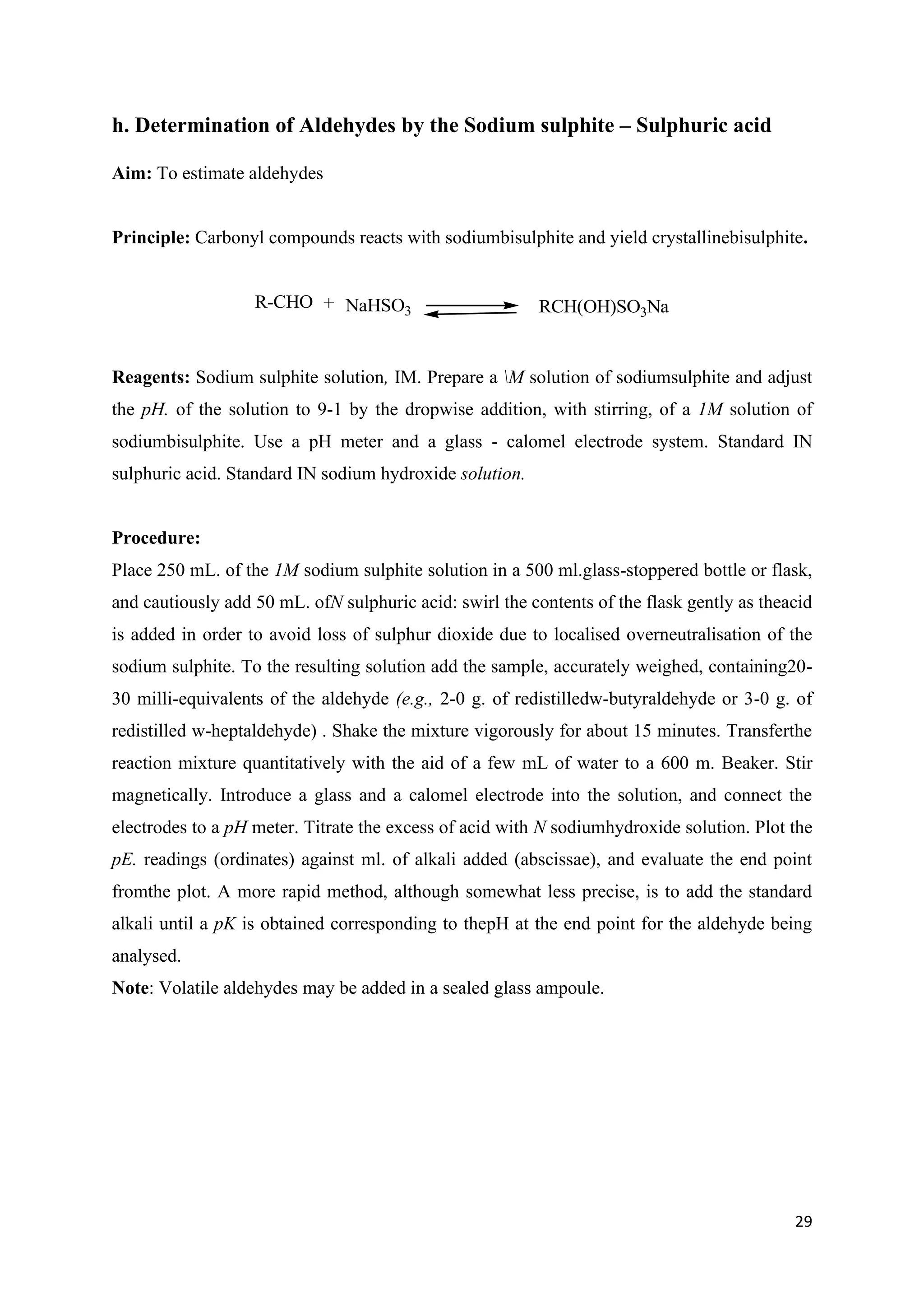

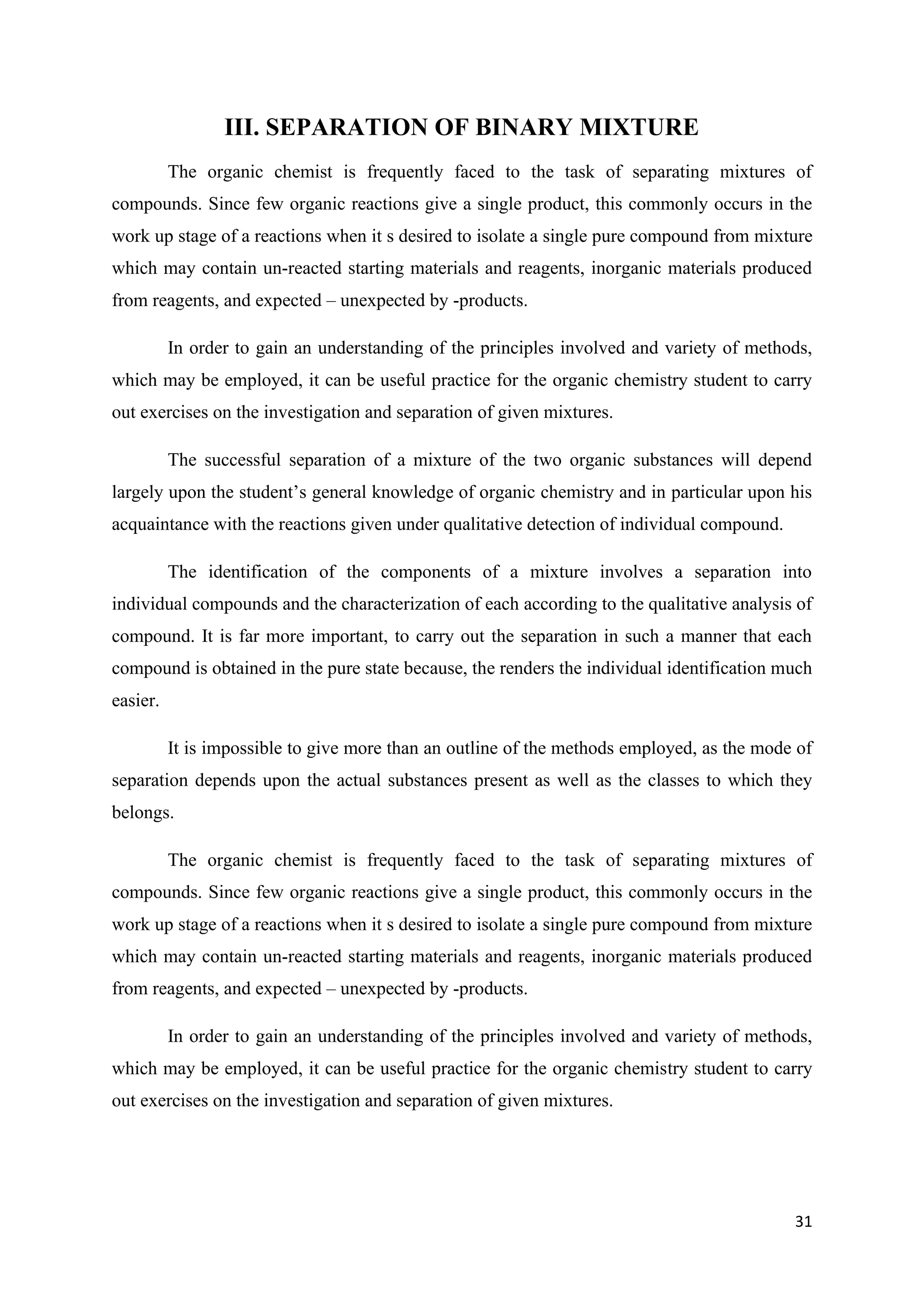
![32
The successful separation of a mixture of the two organic substances will depend
largely upon the student’s general knowledge of organic chemistry and in particular upon his
acquaintance with the reactions given under qualitative detection of individual compound.
The identification of the components of a mixture involves a separation into
individual compounds and the characterization of each according to the qualitative analysis of
compound. It is far more important, to carry out the separation in such a manner that each
compound is obtained in the
The general method to be adopted for the analysis of mixtures of organic compounds
is to separate them into their components and to identify each component as previously
described.
Following three steps caries out the separation of binary mixture:
1) Physical nature of binary mixture
2) Type determination
3) Separation of binary mixture
1) Physical Nature f Binary Mixture:
Physically the mixture may be either one of the following type:
a) Solid – Solid [ Two solids mixed together]
E.g. Benzoic acid + α – napthol]
b) Solid – Solid [Eutectic mixture i.e. at room temperature one solid liquefies]
Another solid & both becomes liquid; liquefied mass become solidifies on
cooling]
e.g. Camphor + Menthol
c) Solid – Liquid [ Solution: i.e. solid may dissolve in liquid & forms a solution]
e.g. Acetone + Benzoic acid; Ethanol +Salicylic acid
d) Solid – Liquid [ suspension; i.e. solid is observed at the bottom in a mixture]
e.g. Toluene + Benzoic acid
e) Liquid – Liquid
e.g. Pyridine + Toluene](https://image.slidesharecdn.com/lambertlabmanualpharmacycollege-240224053036-7d2745f3/75/Organic-Synthesis-and-Estimation-of-Functional-Groups-34-2048.jpg)
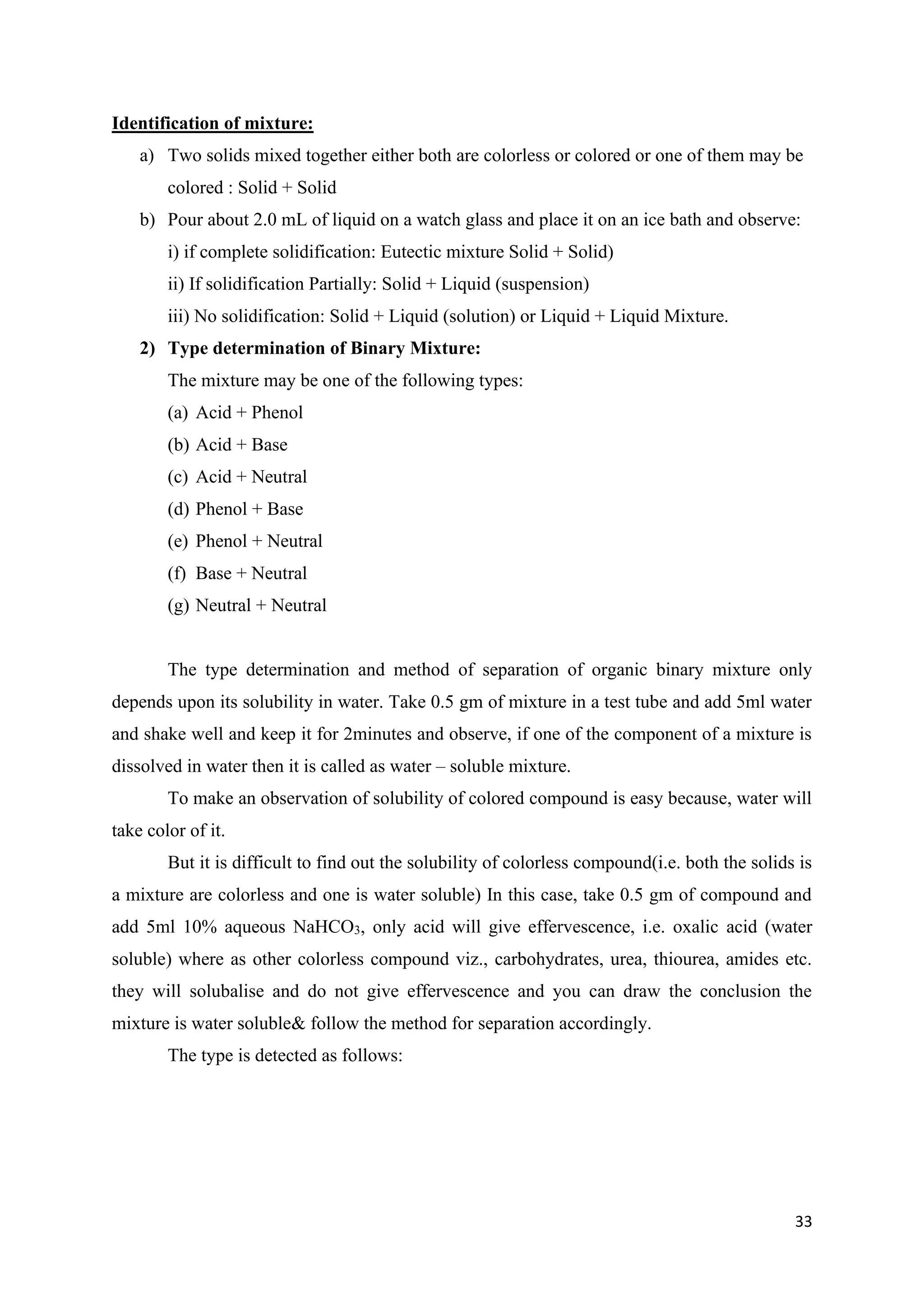
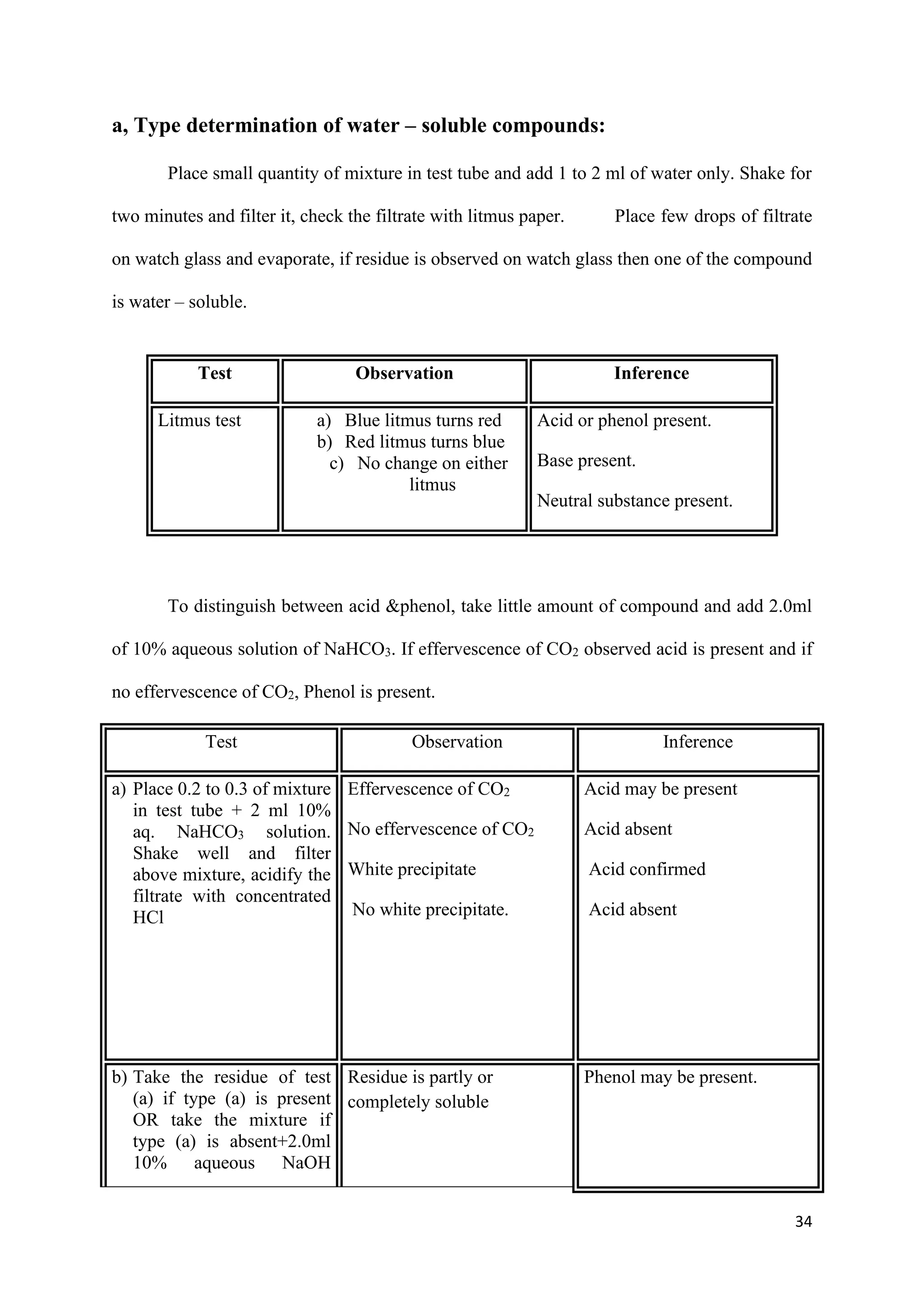
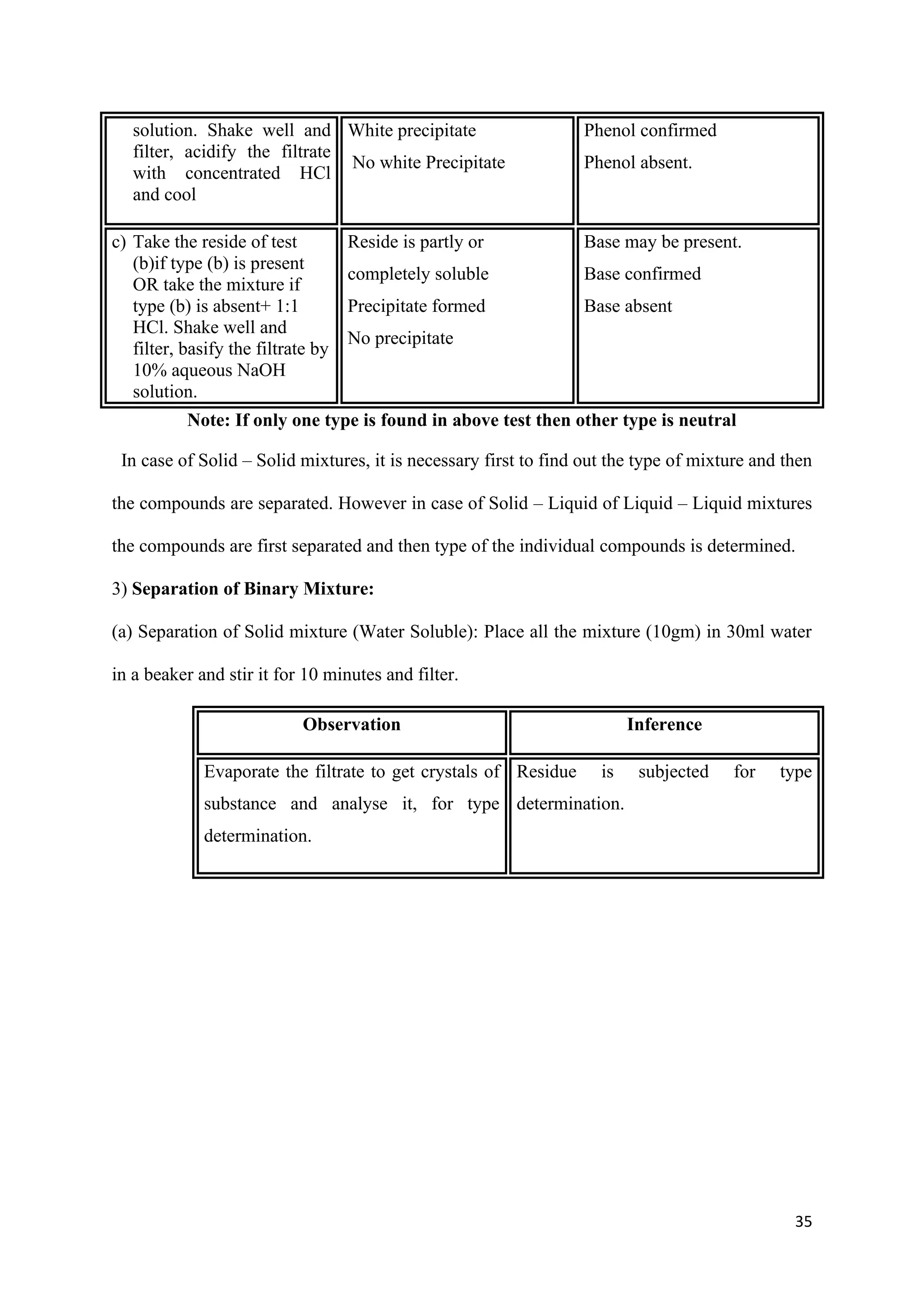
![36
b, Separation of Solid + Solid mixture (water insoluble)
According to the types of organic mixture three groups are made for separation.
(i) Acid – Phenol/Acid – Base/ Acid - neutral.
(ii) Phenol – Base/ phenol – neutral
(iii) Base – Neutral.
(i) Separation of Acid – Phenol/ Acid - Base/ Acid – Neutral type mixtures: Place all the
mixture (10gm) in a beaker, add to it with stirring 10% aq. NaHCO3, Solution, till
effervescence of CO2 stops and filter it.
Observation Inference
Cool the filtrate, add cone. HCl Slowly till blue
litmus turns red. Acid precipitates. Filter the
precipitate of acid. Wash it with water,
recrystallized from hot water and dry it.
Wash the residue with water, recrystallized
it with ethanol or water ethanol mixture.
(ii) Separation of Phenol – Base/Phenol – Neutral type mixtures: Place all the mixture
10gm in beaker, add to it 10% aqueous NaOH solution [till red litmus turns blue] stir well
and filter it.
Filtrate (Na – salt of phenol) Residue (Base / Neutral)
Add cone. HCl Slowly till blue Litmus turns red
Phenol precipitates. Filter the precipitate, wash it
with water, recrystallise from ethanol.
Wash the residue with water, recrystallise
from suitable solvent.(for Base: ethanol-
water, for Neutral: benzene etc.)
Reaction:
R-COOH +NaHCO3 R – COONa+CO2 +6H2o
Sodium Salt (Soluble)
R – COOH + HCl R- COOH + NaCl
(ppt)
Reaction:
Ar – OH +NaHCO3 Ar – ONa+ H2o
Phenol Sodium salt (Soluble)
Ar-oNa + HCl Ar – OH + Nacl](https://image.slidesharecdn.com/lambertlabmanualpharmacycollege-240224053036-7d2745f3/75/Organic-Synthesis-and-Estimation-of-Functional-Groups-38-2048.jpg)
